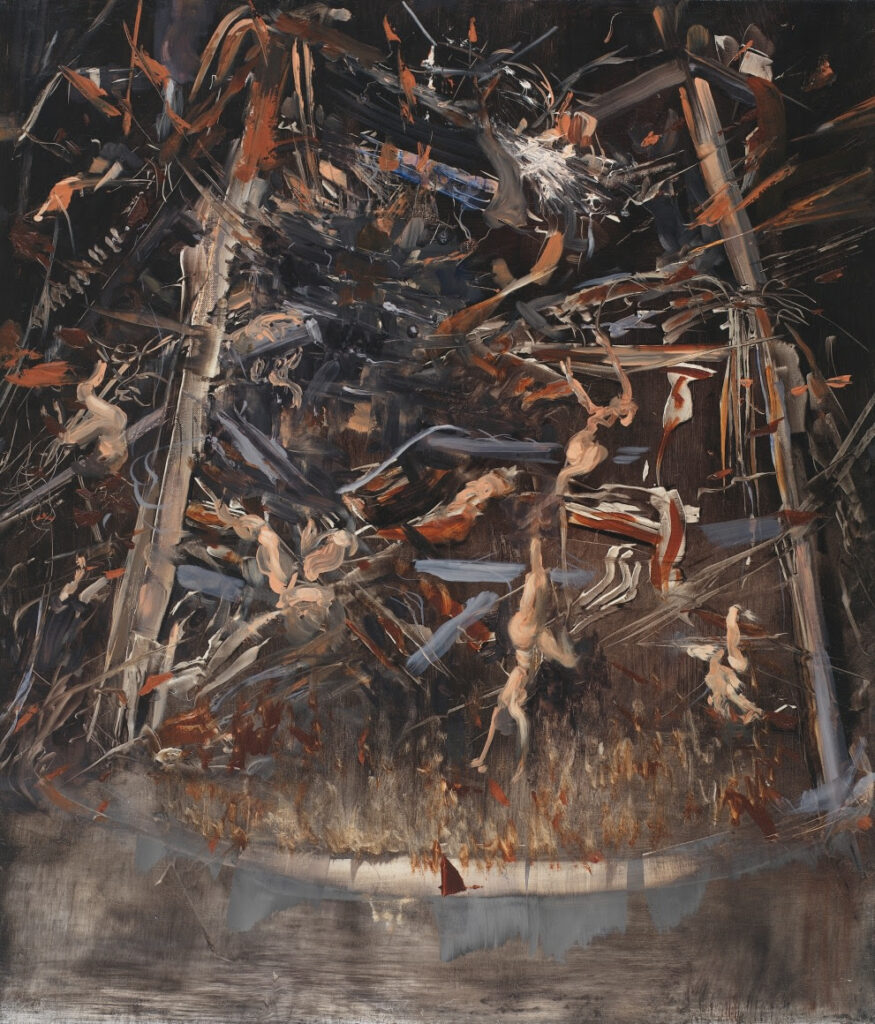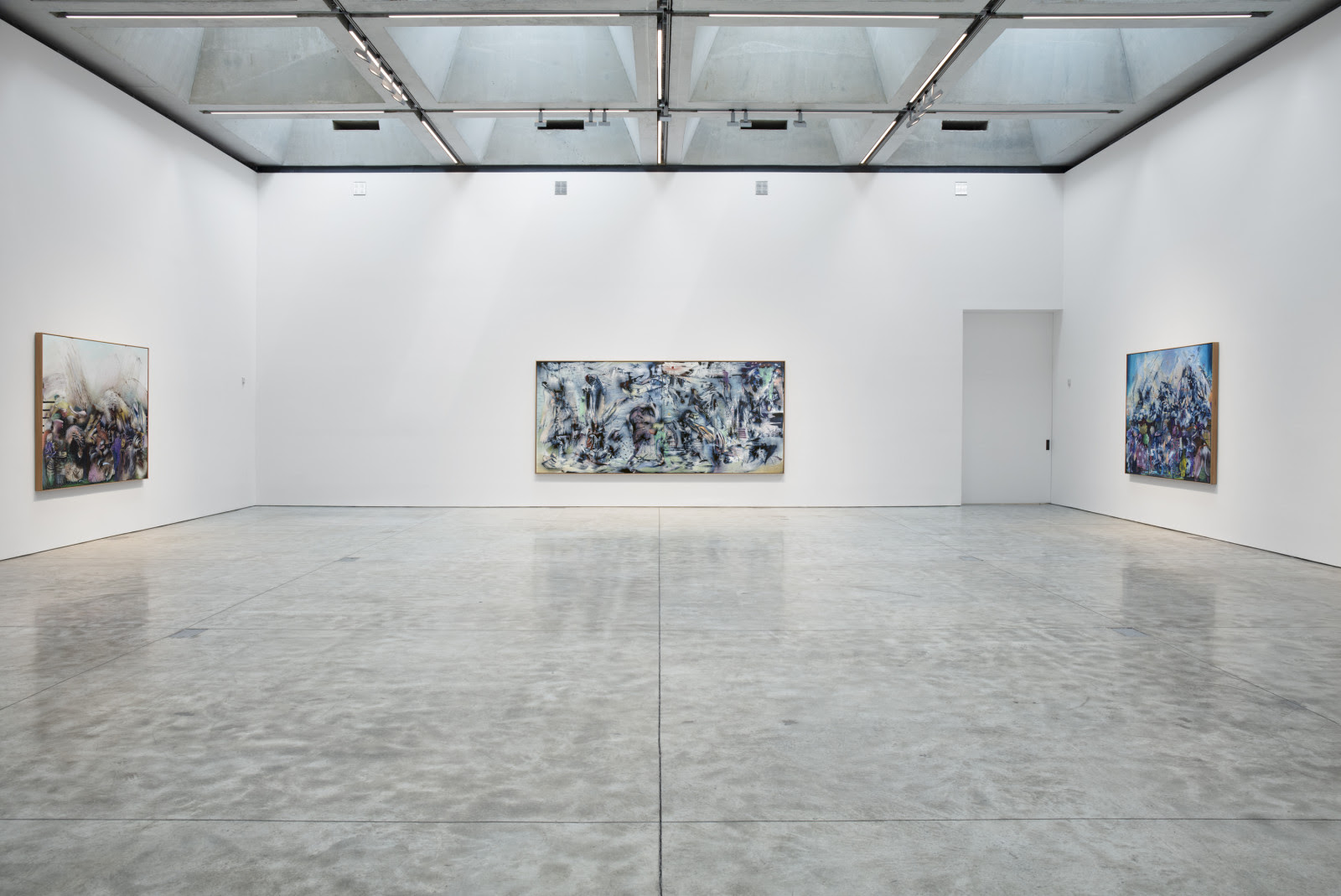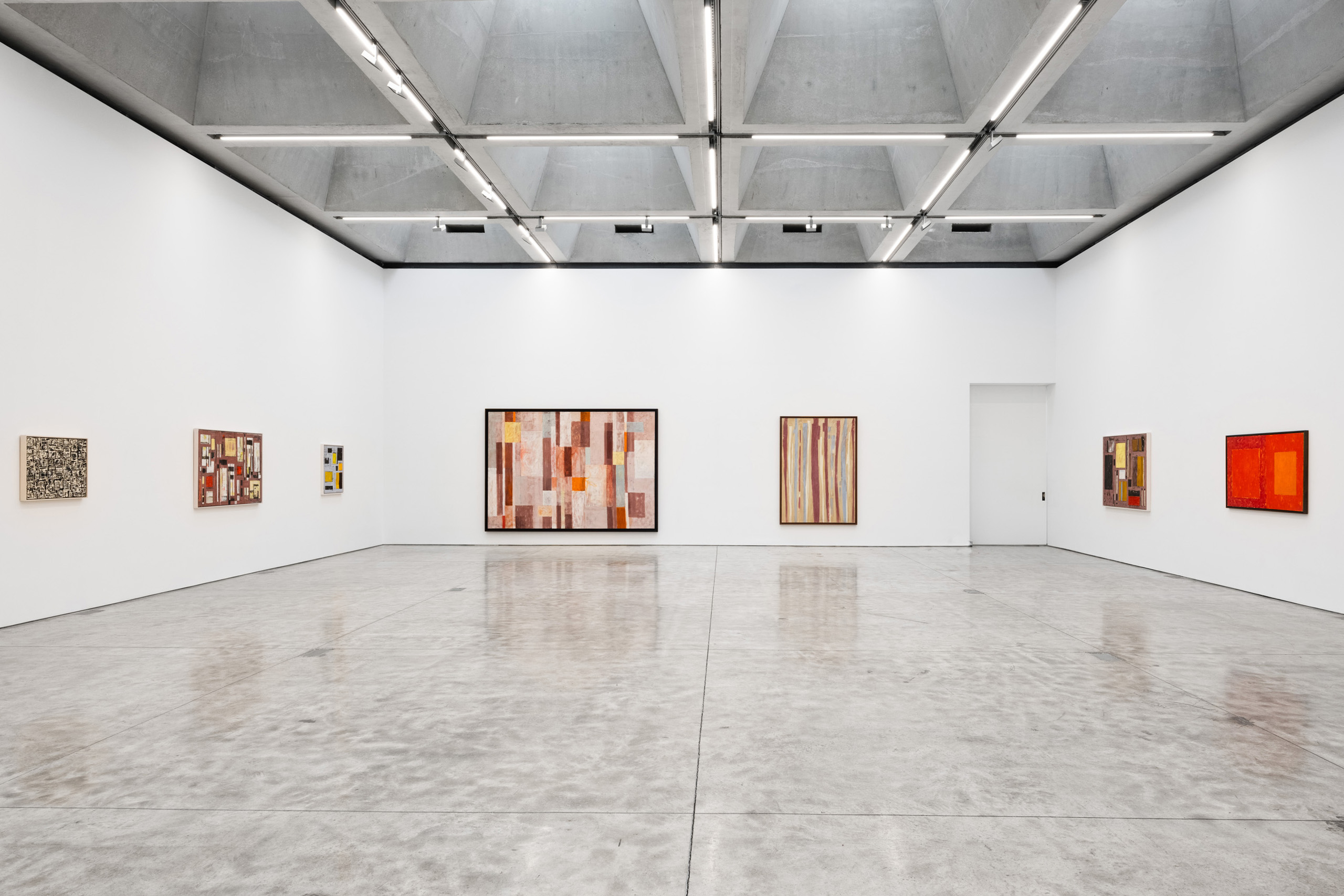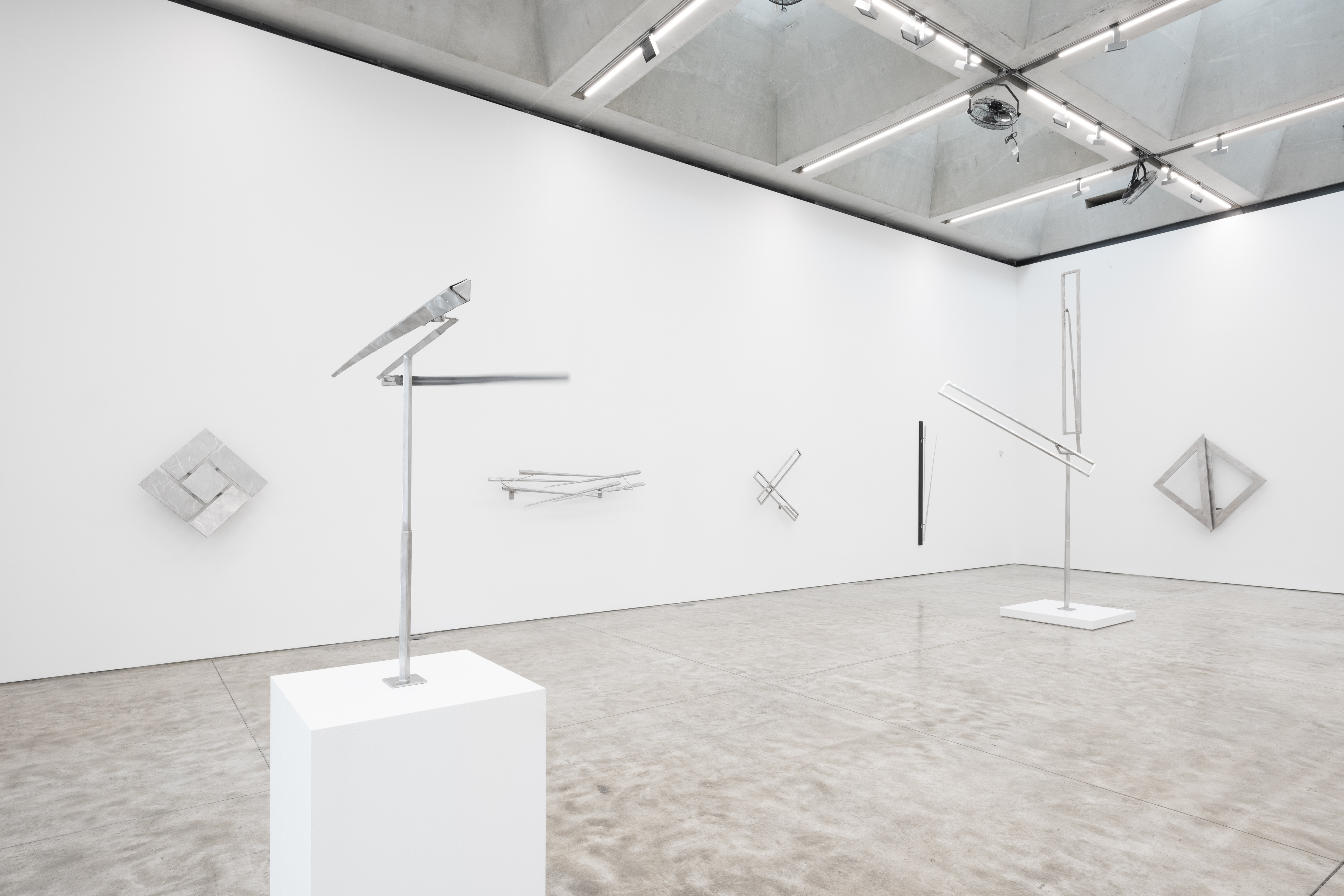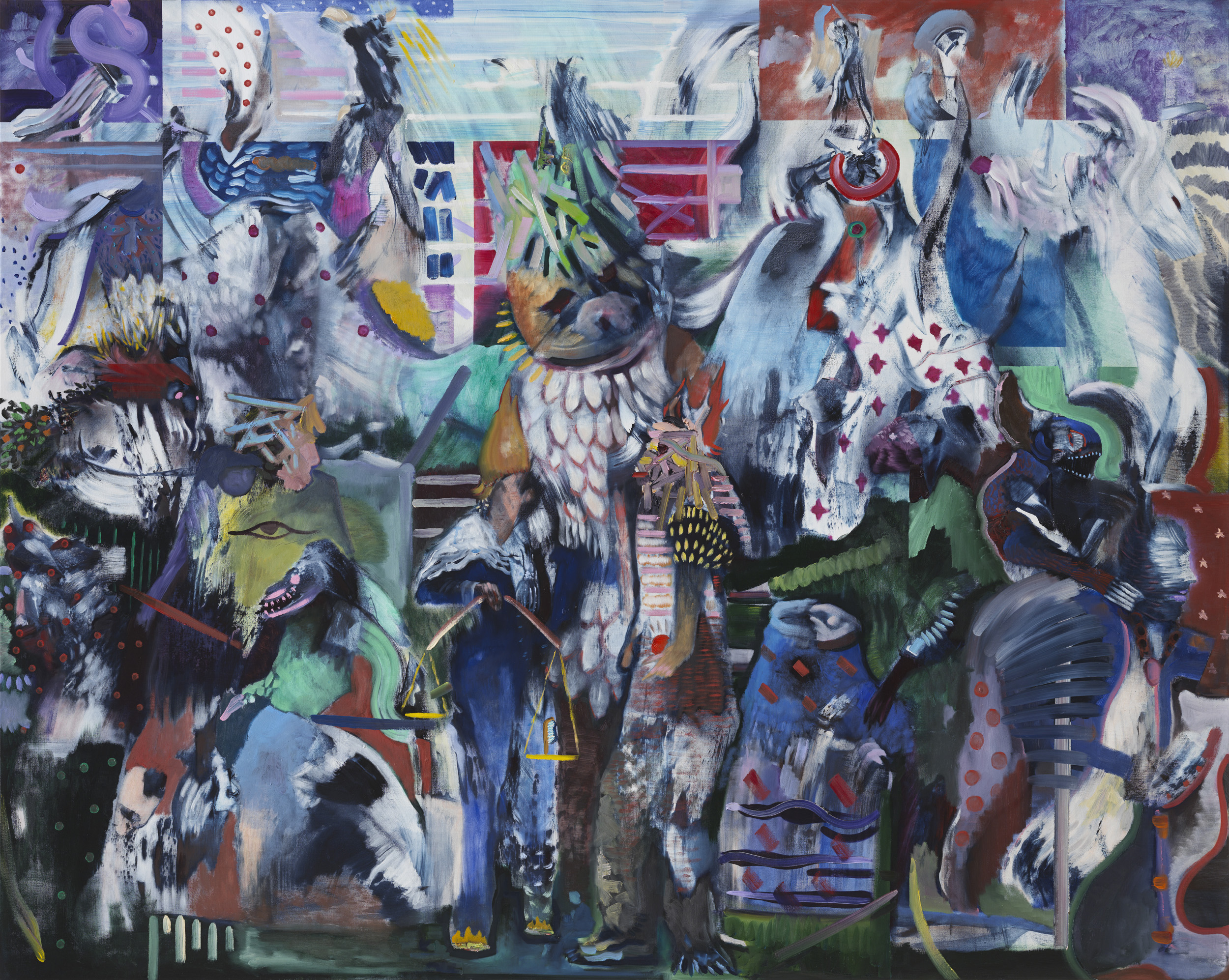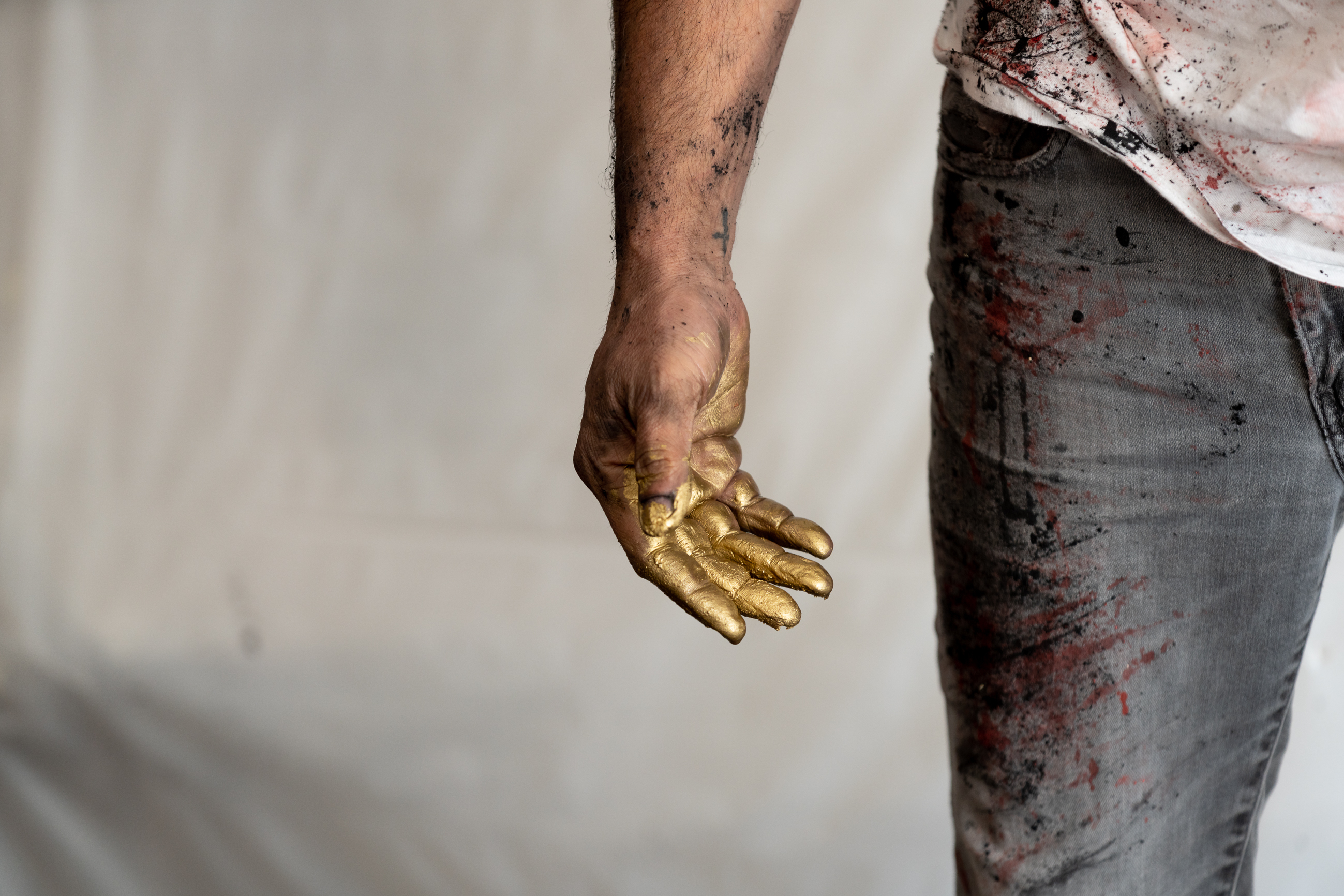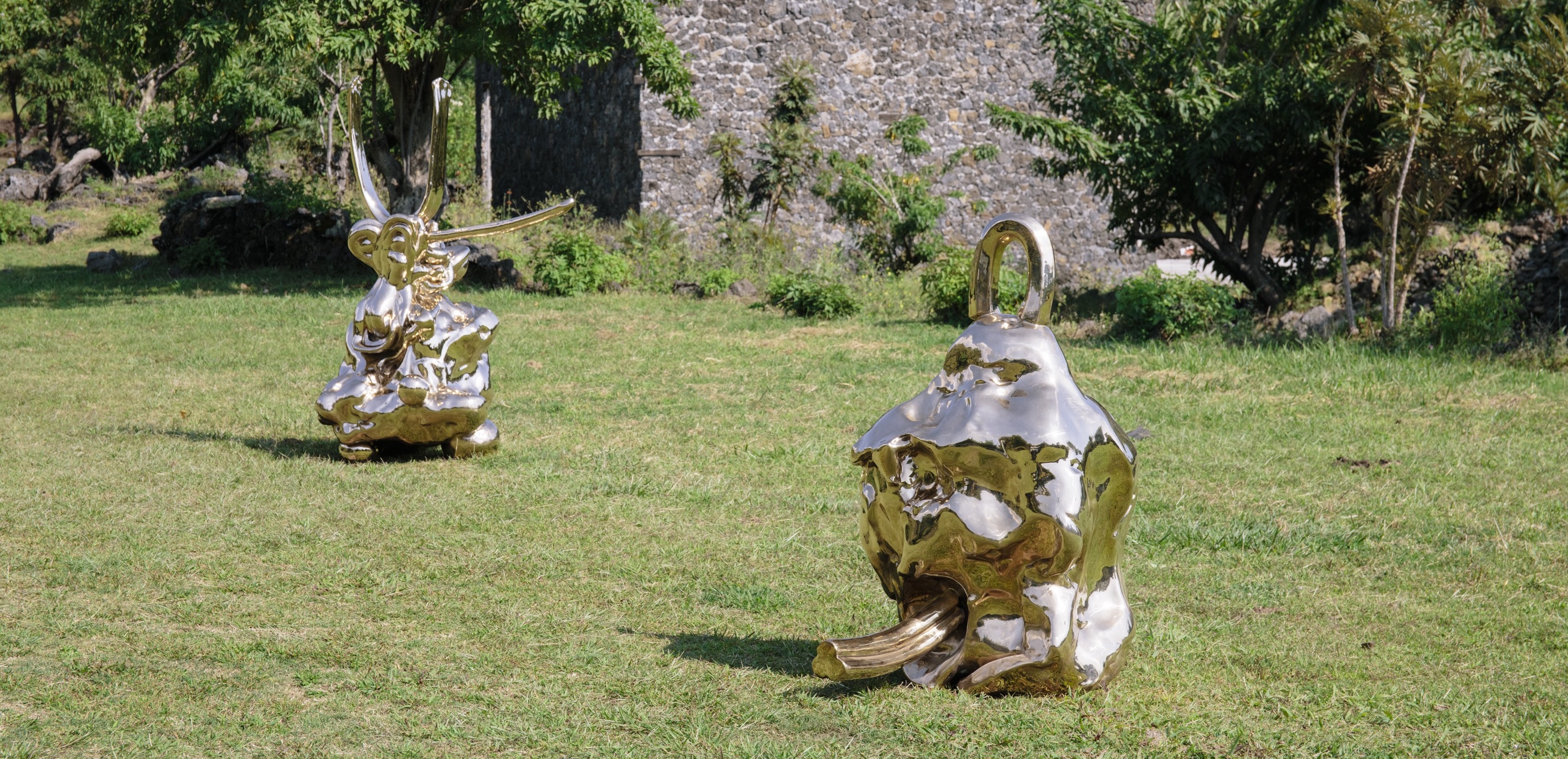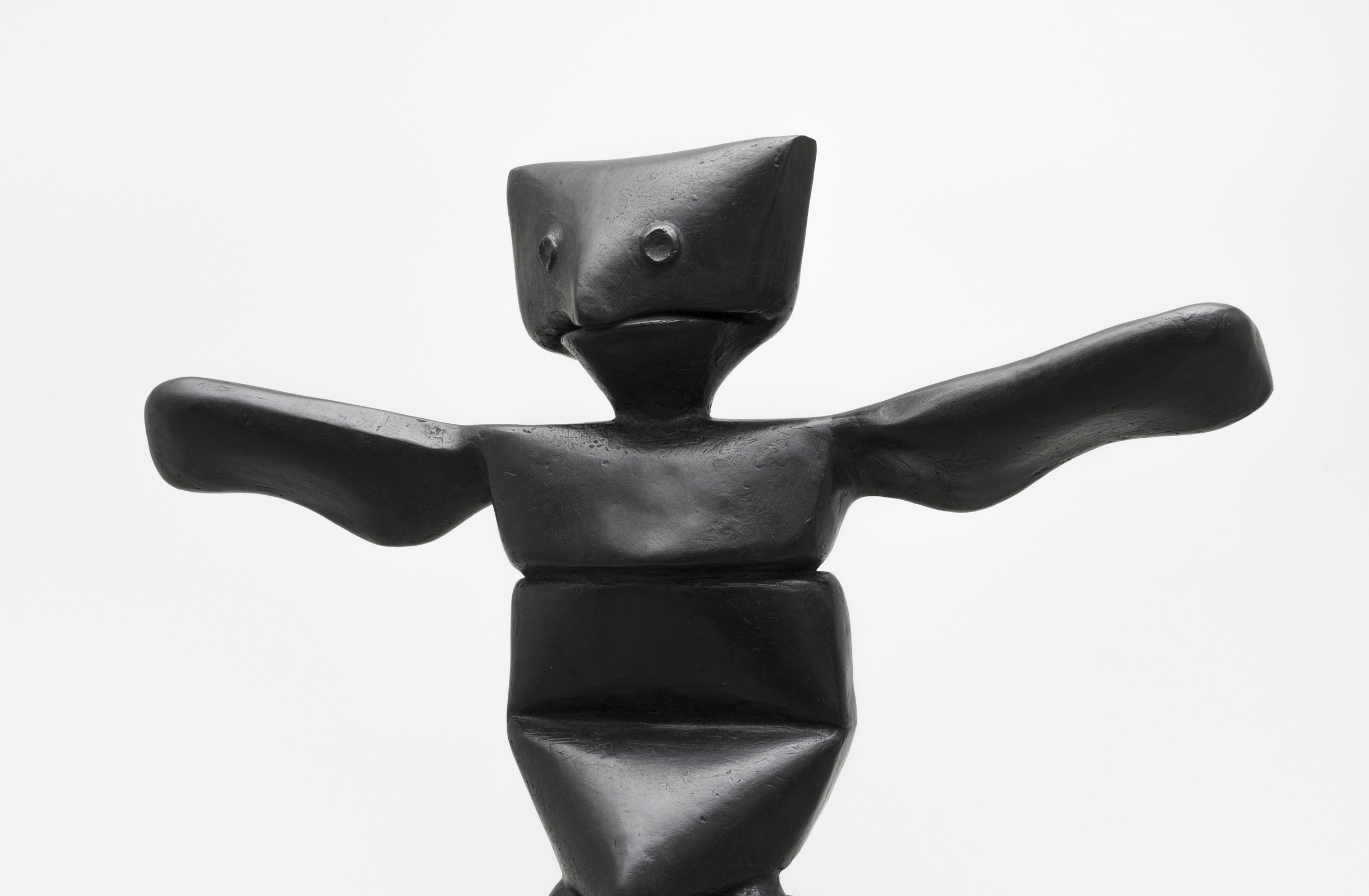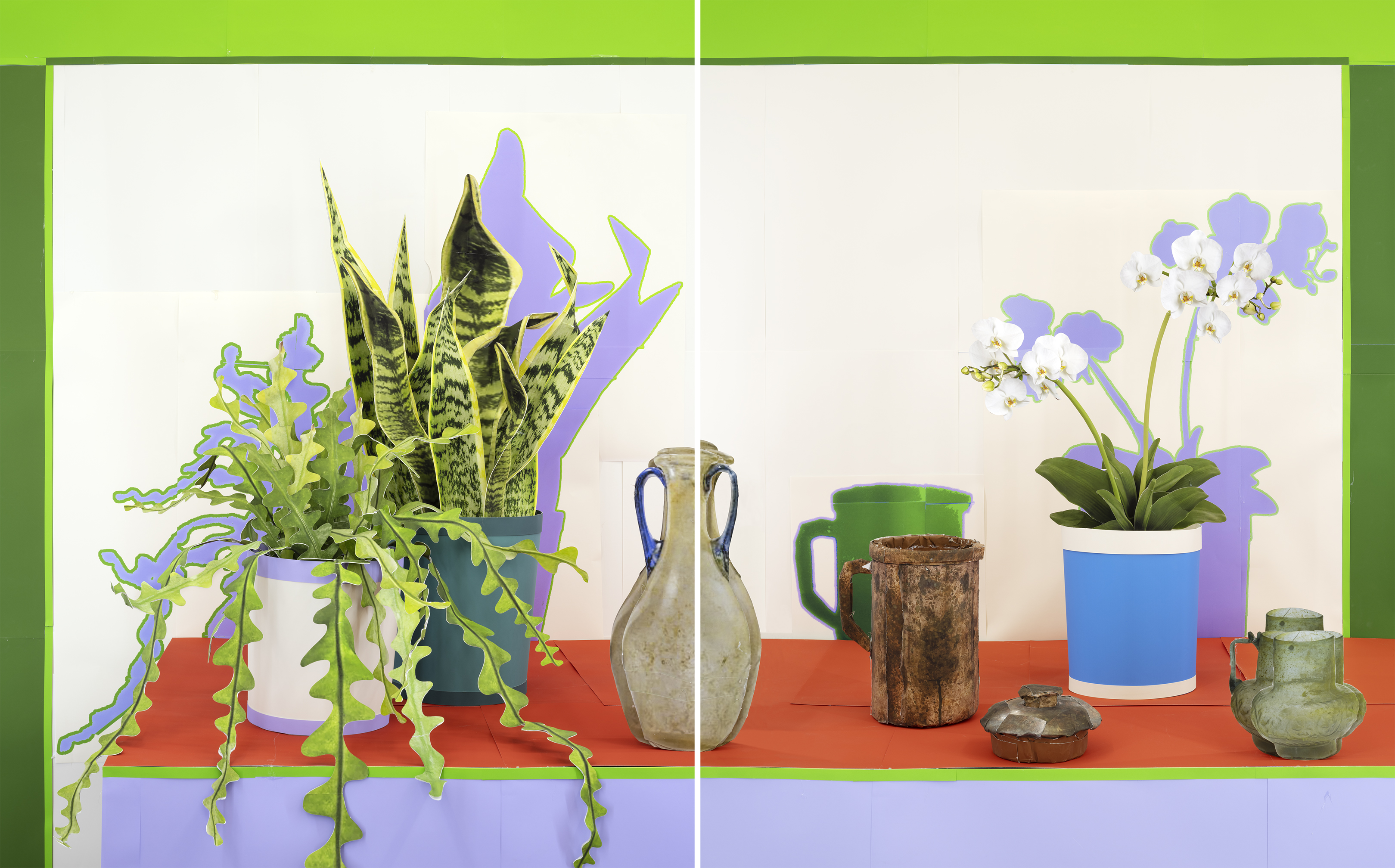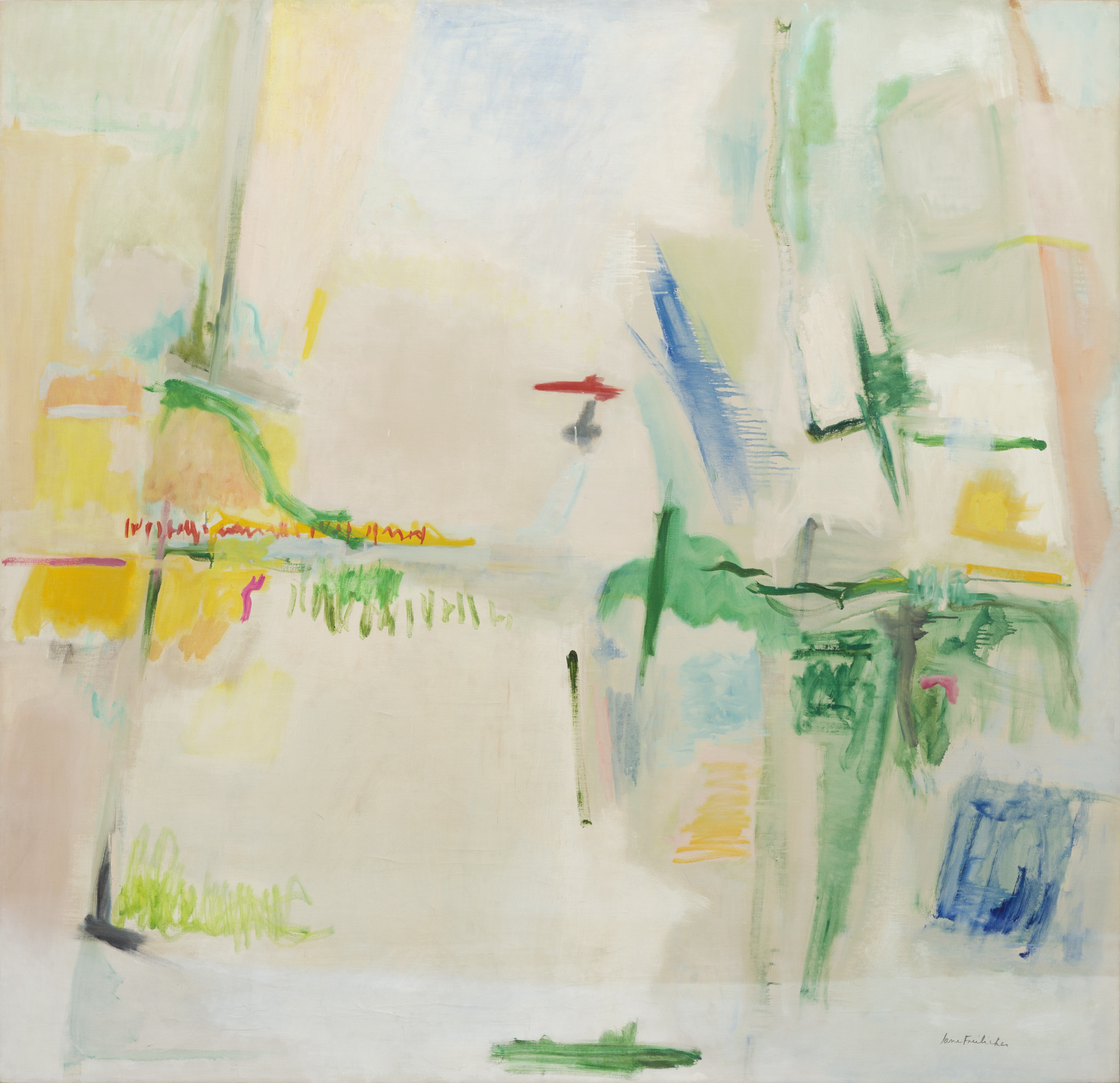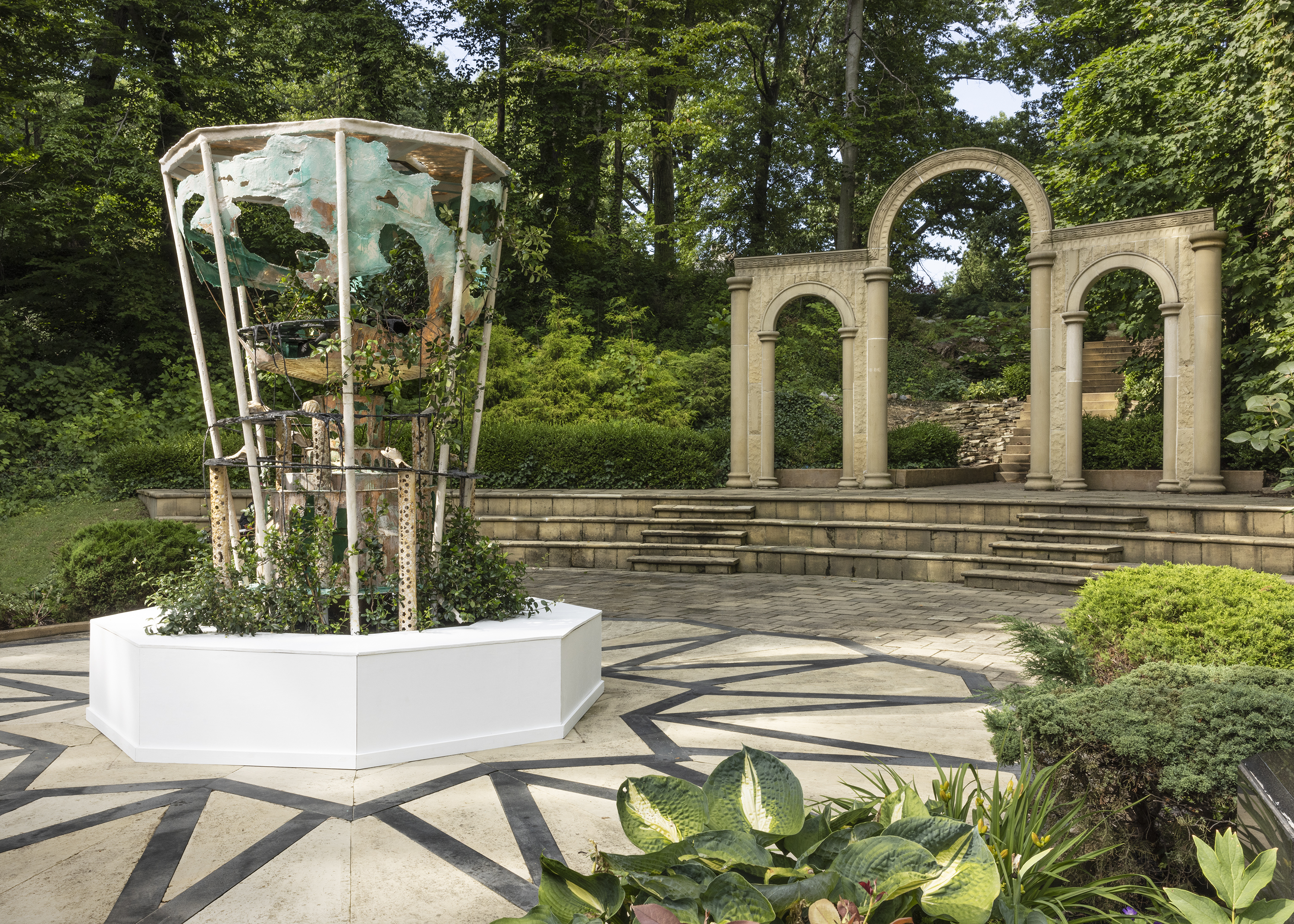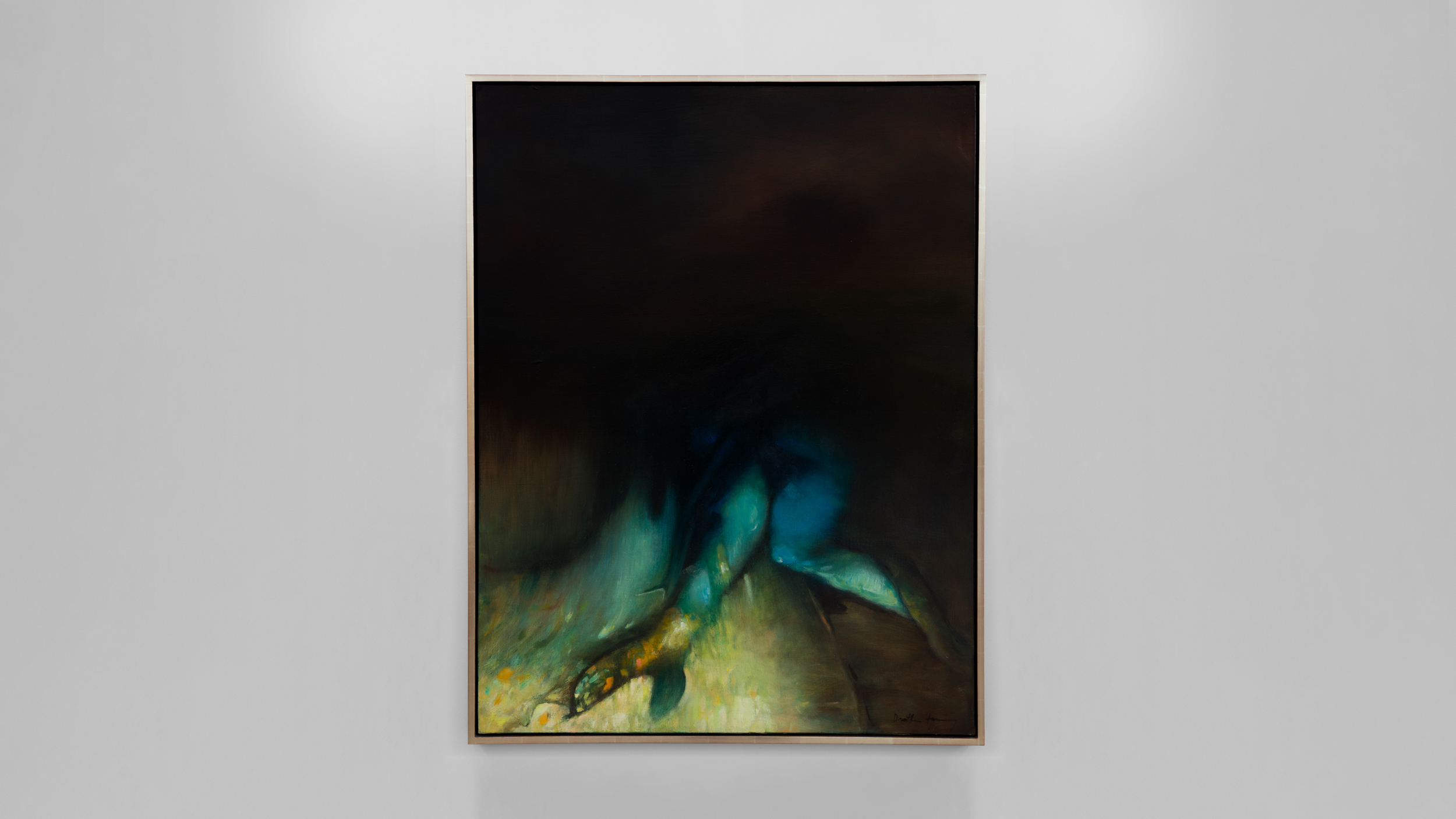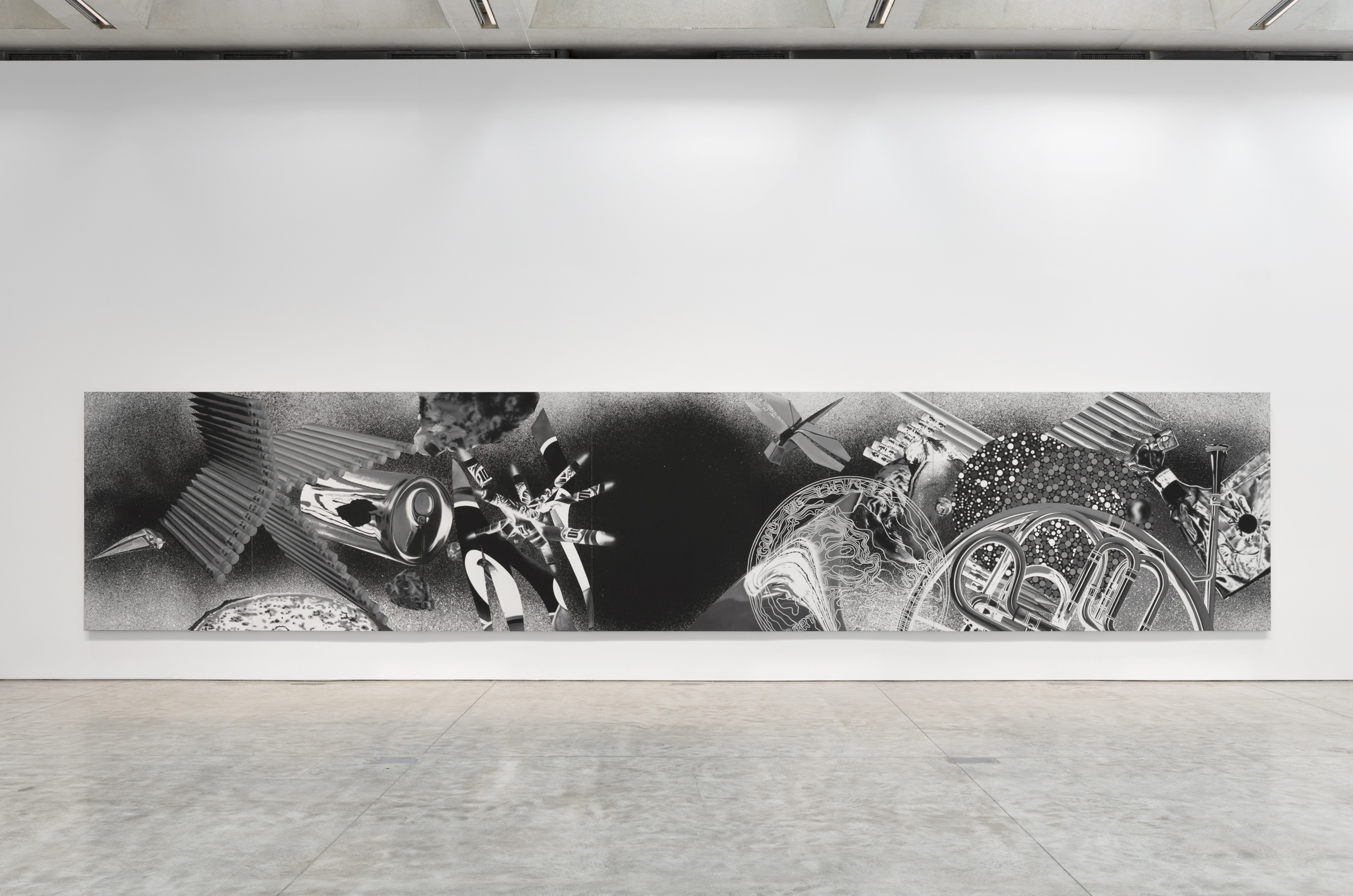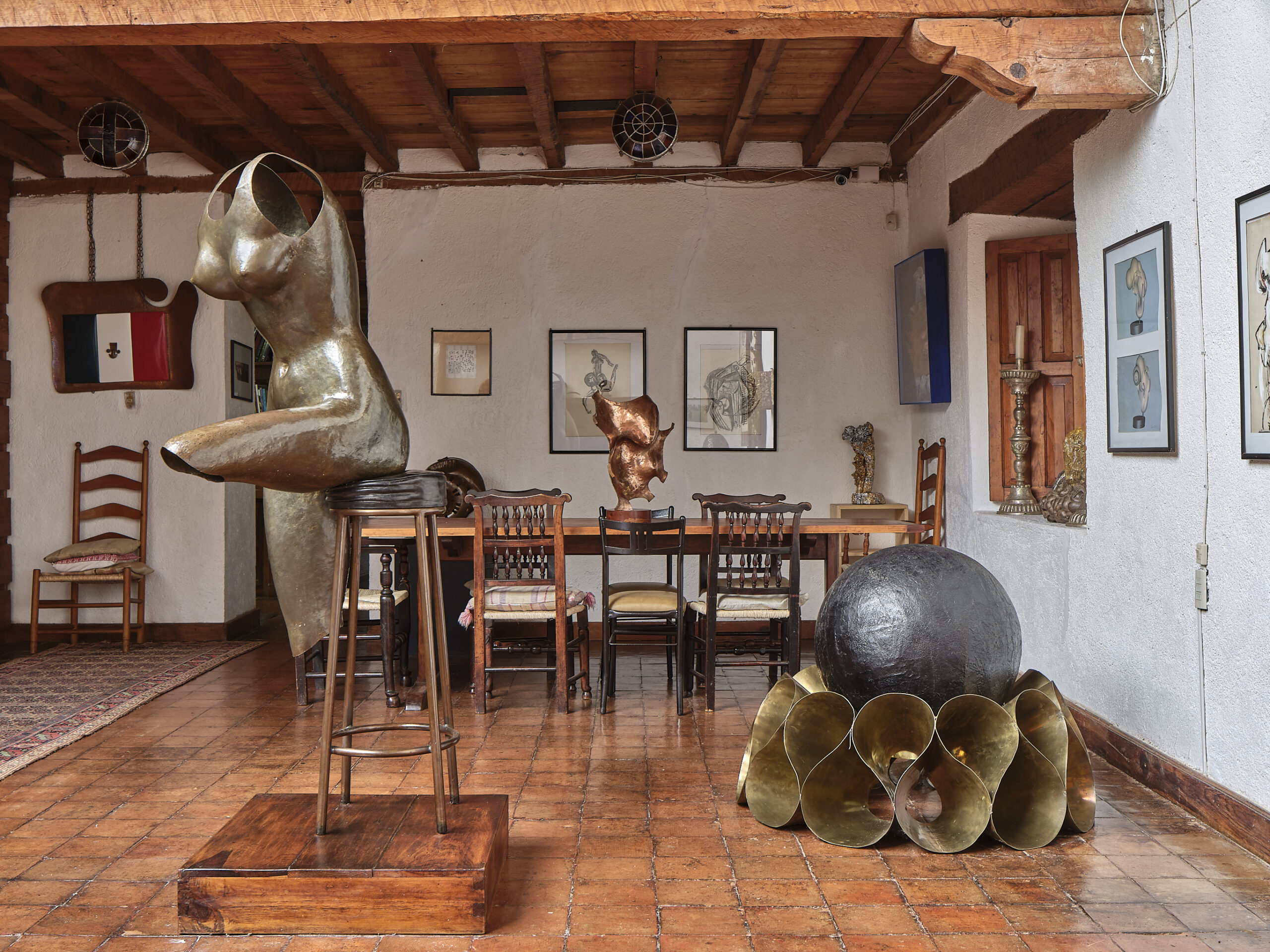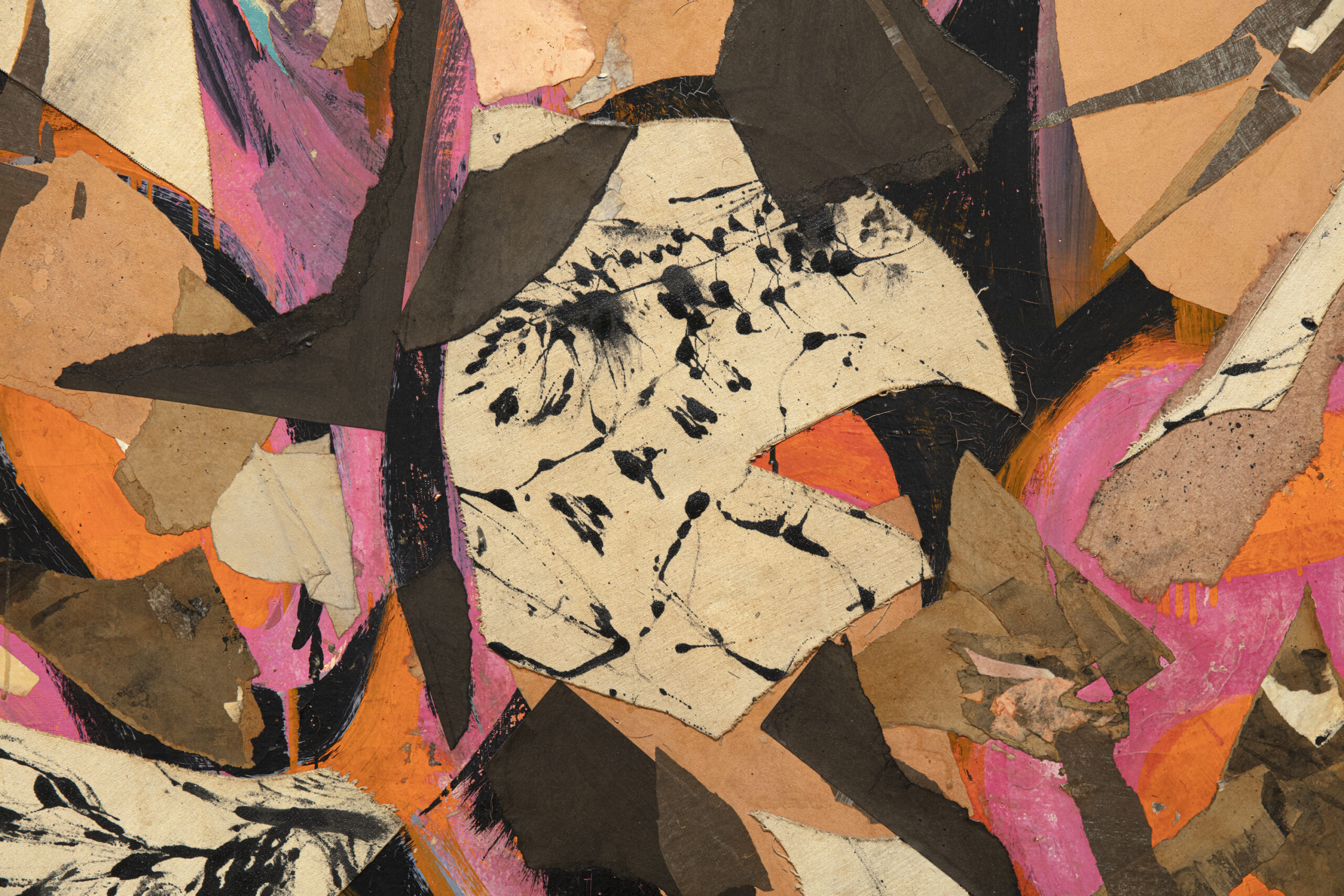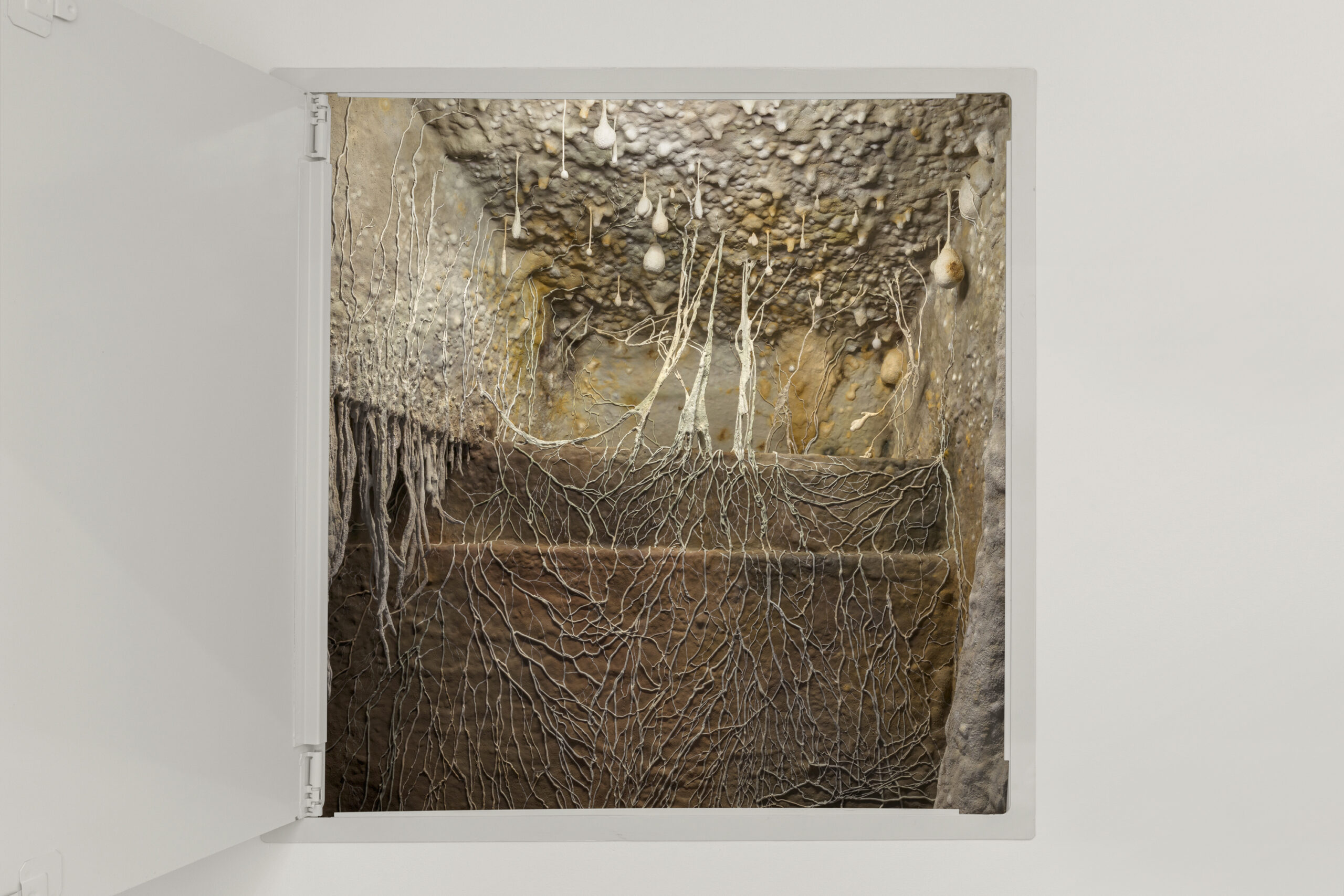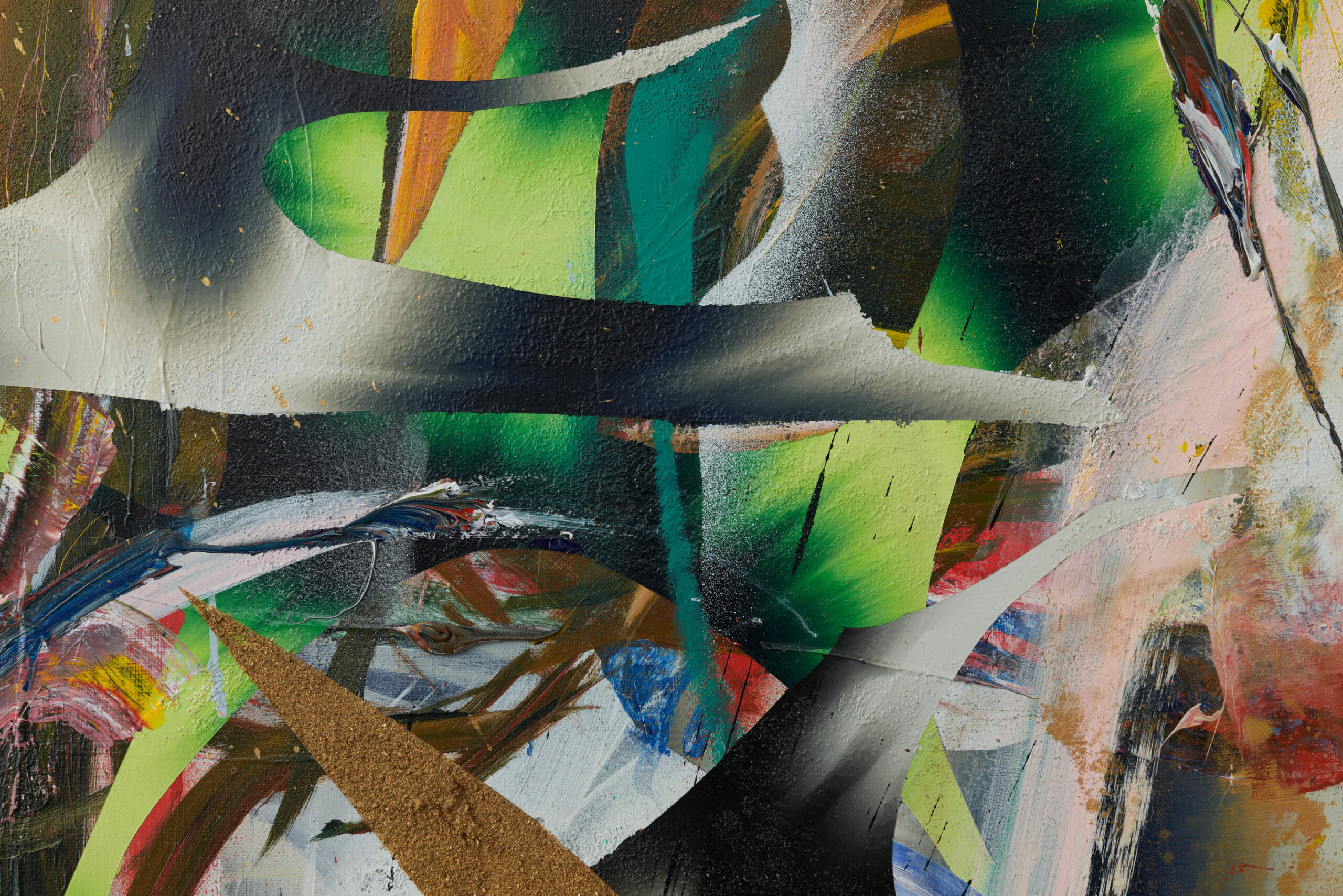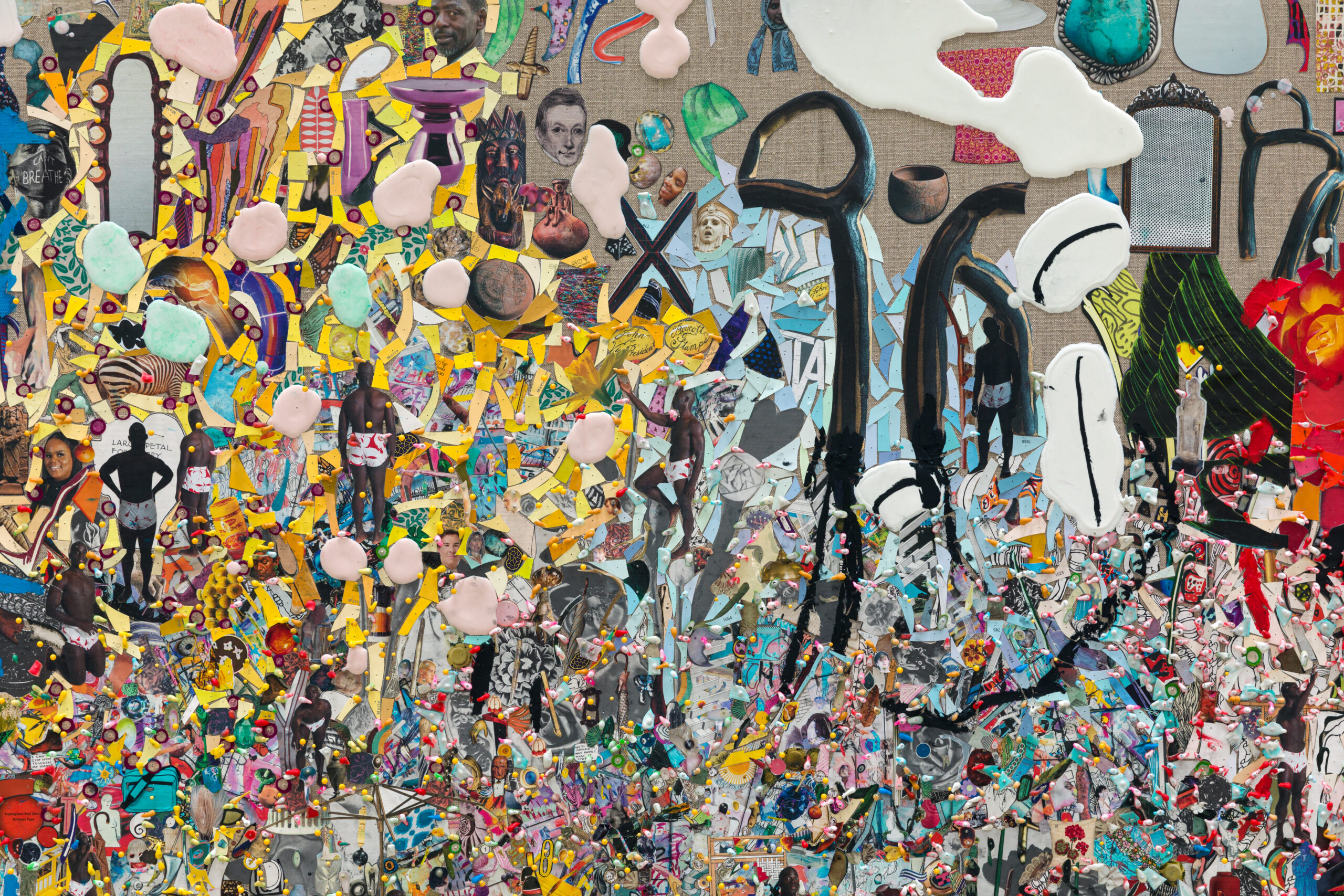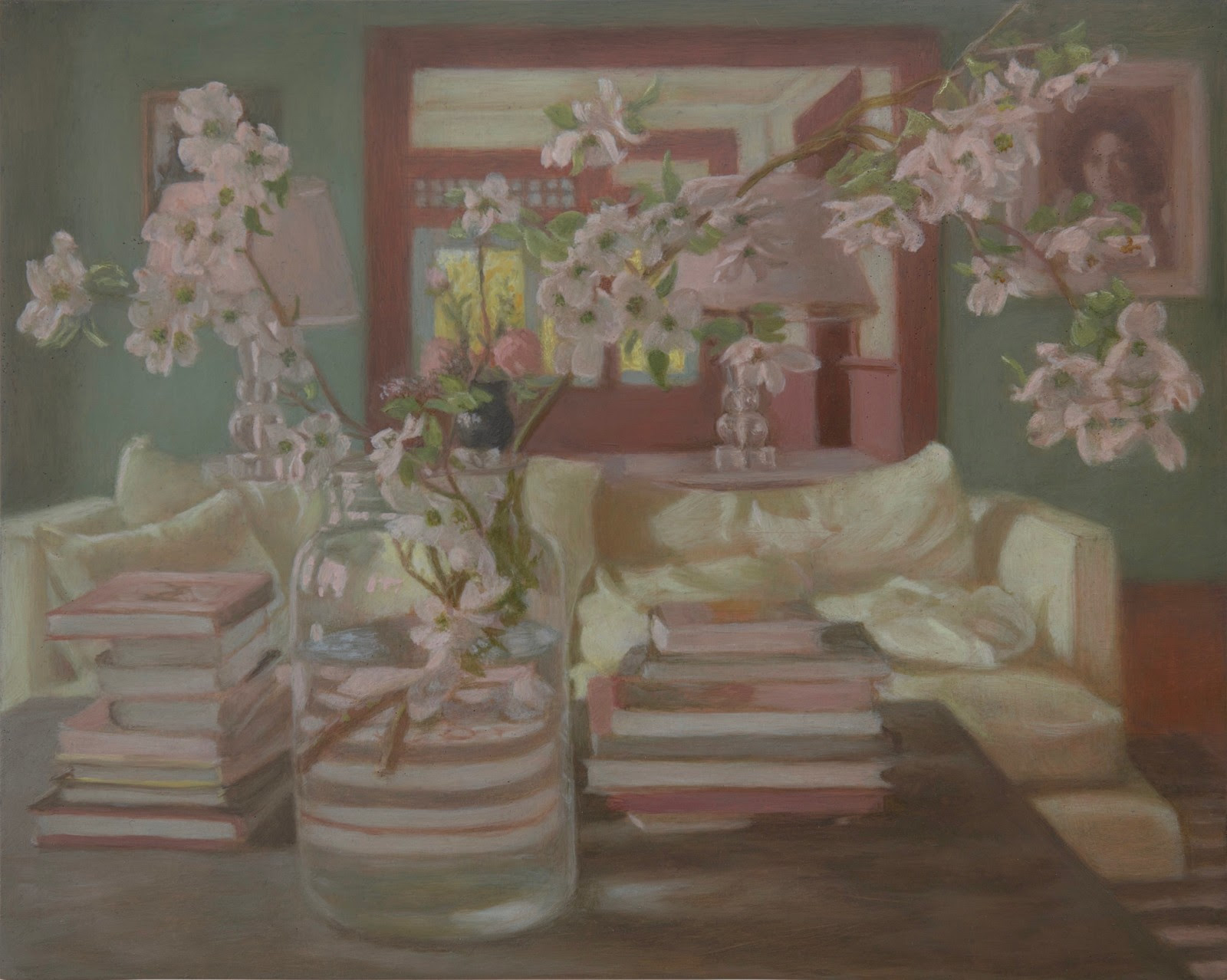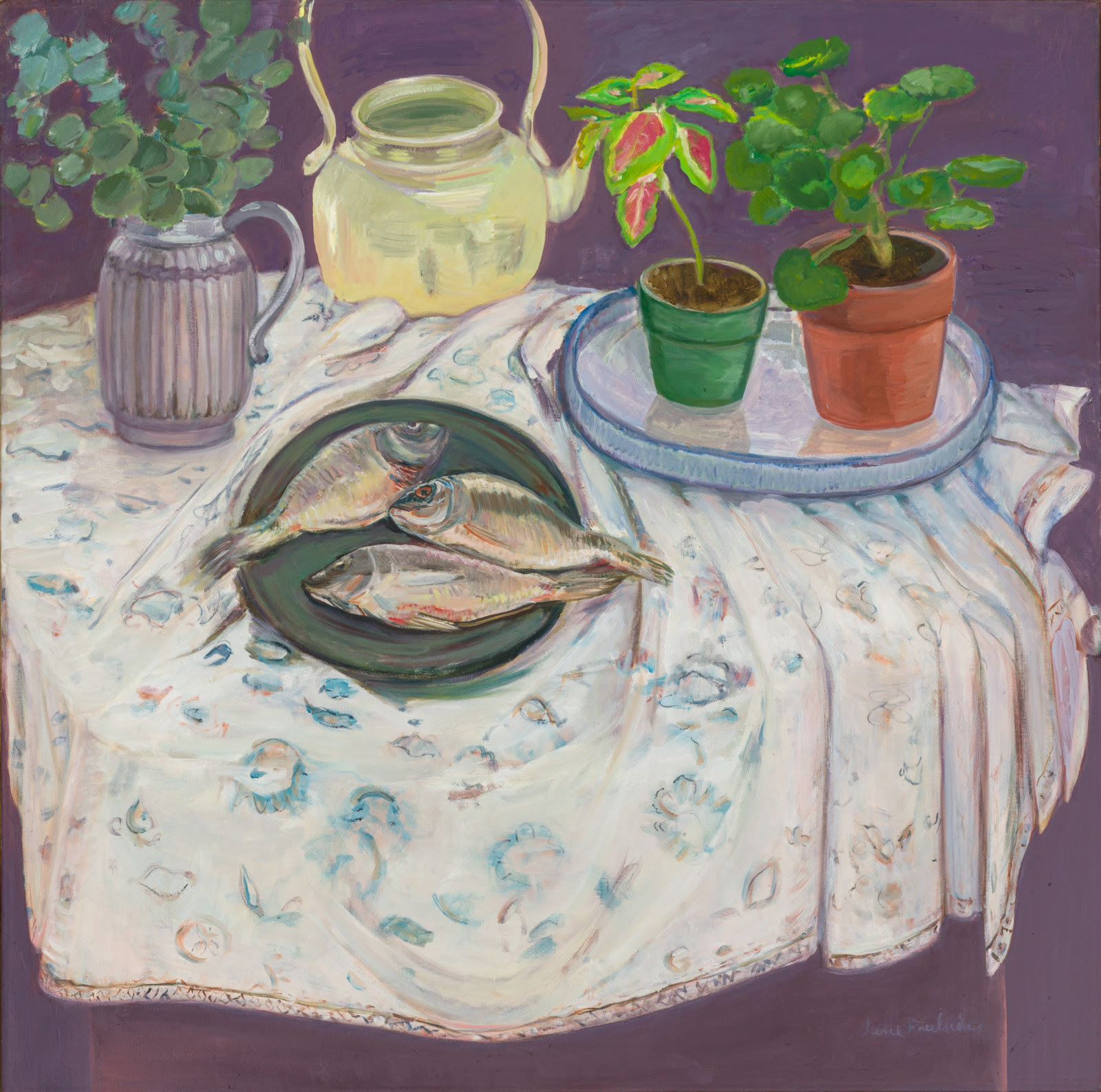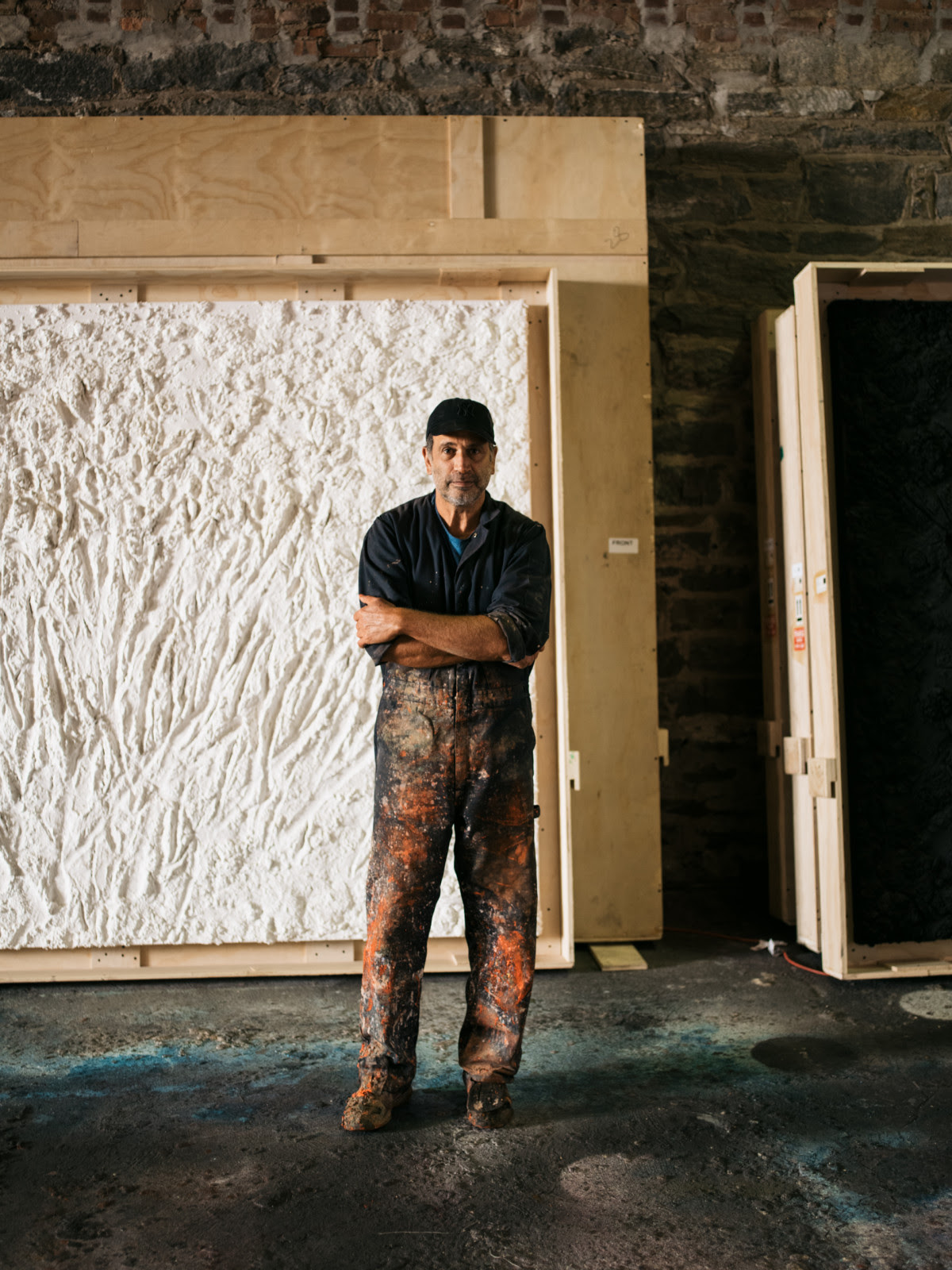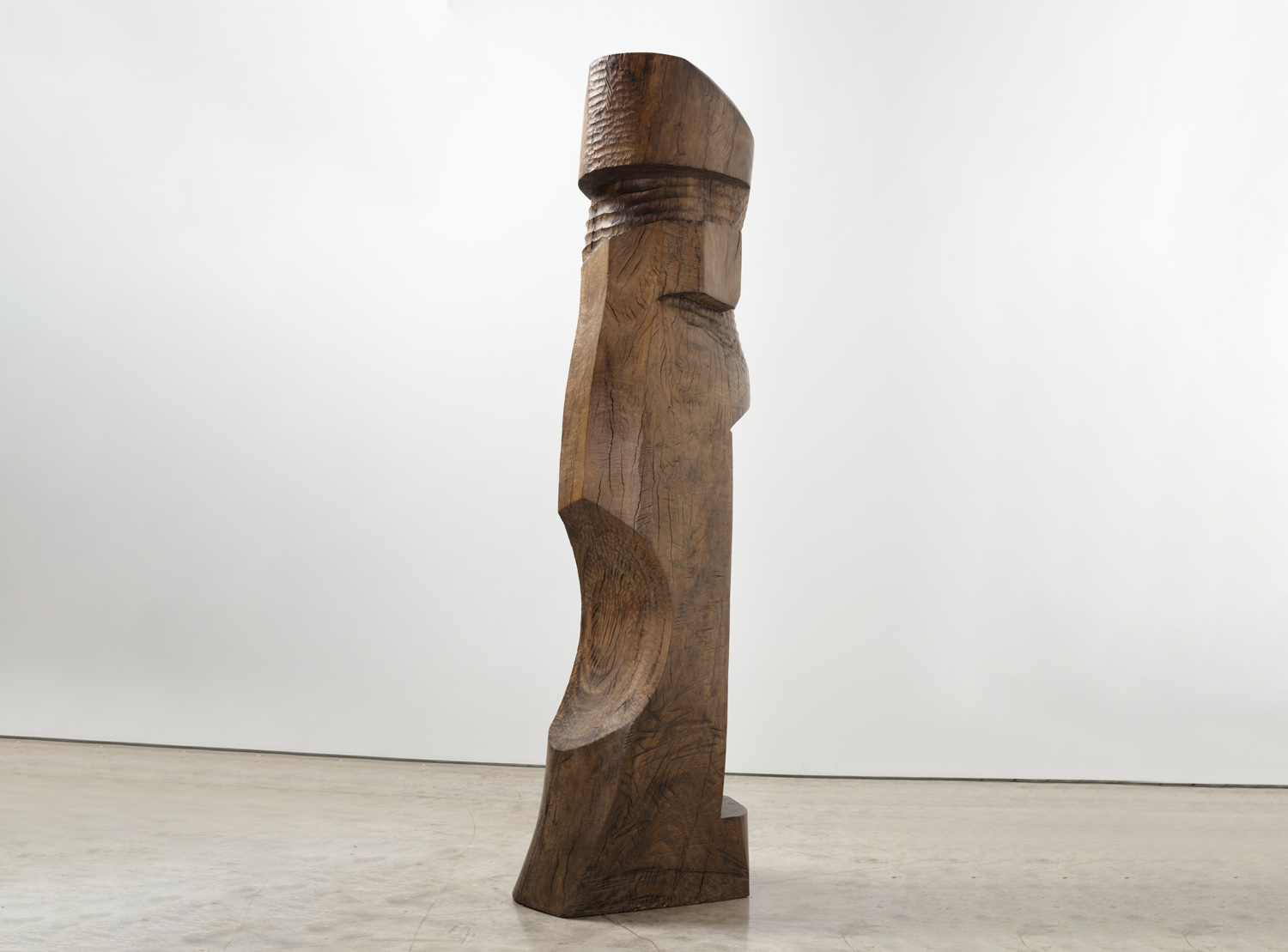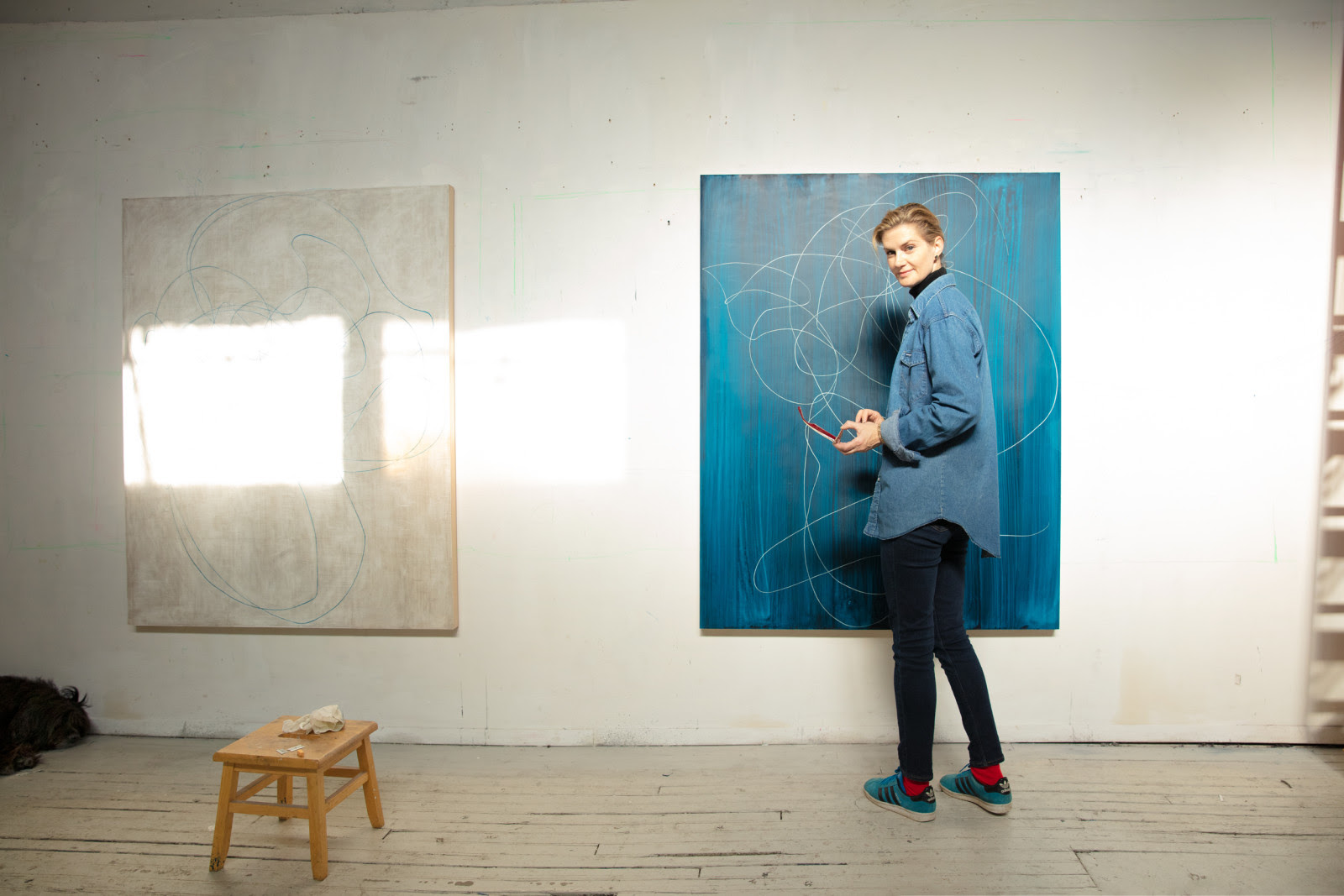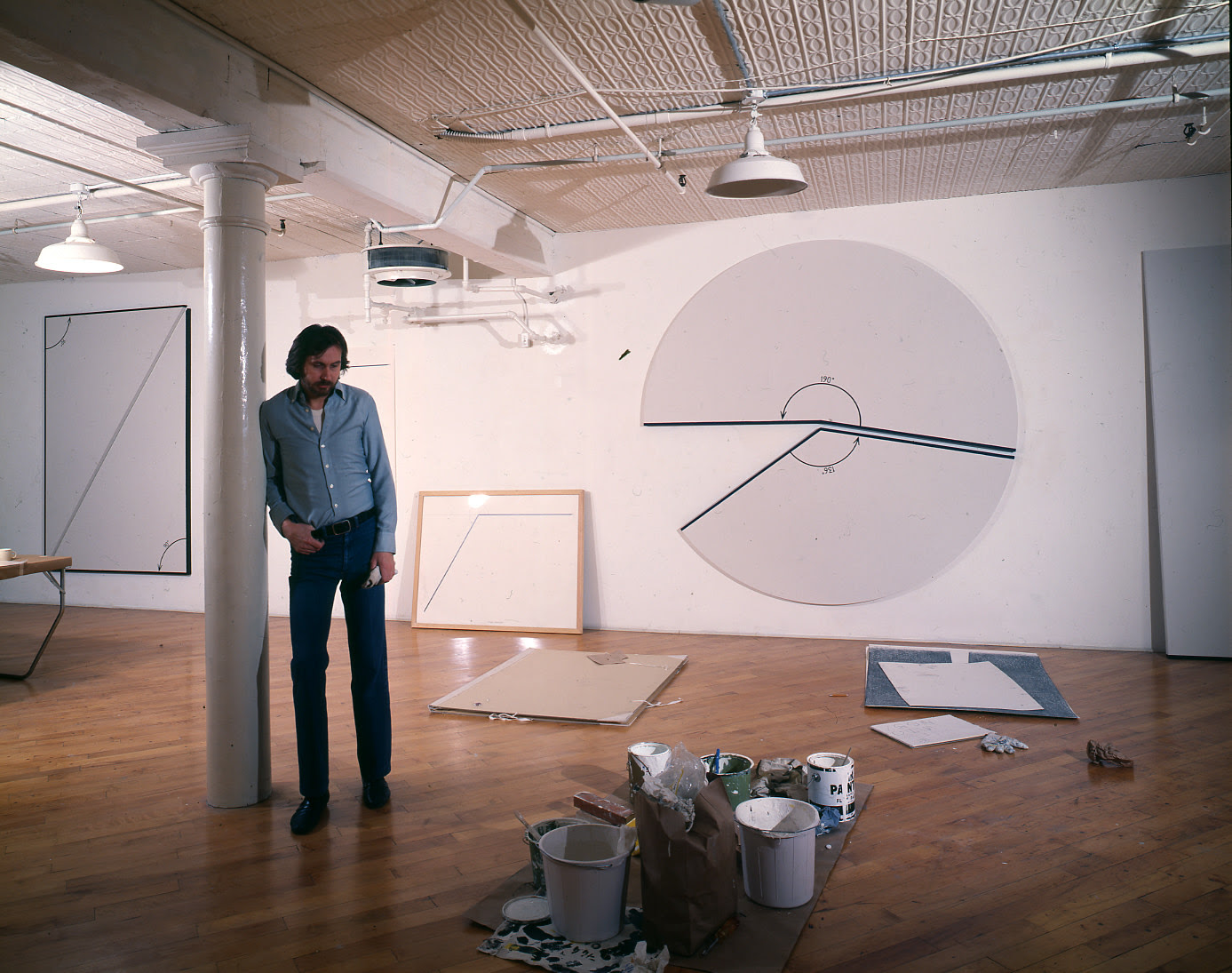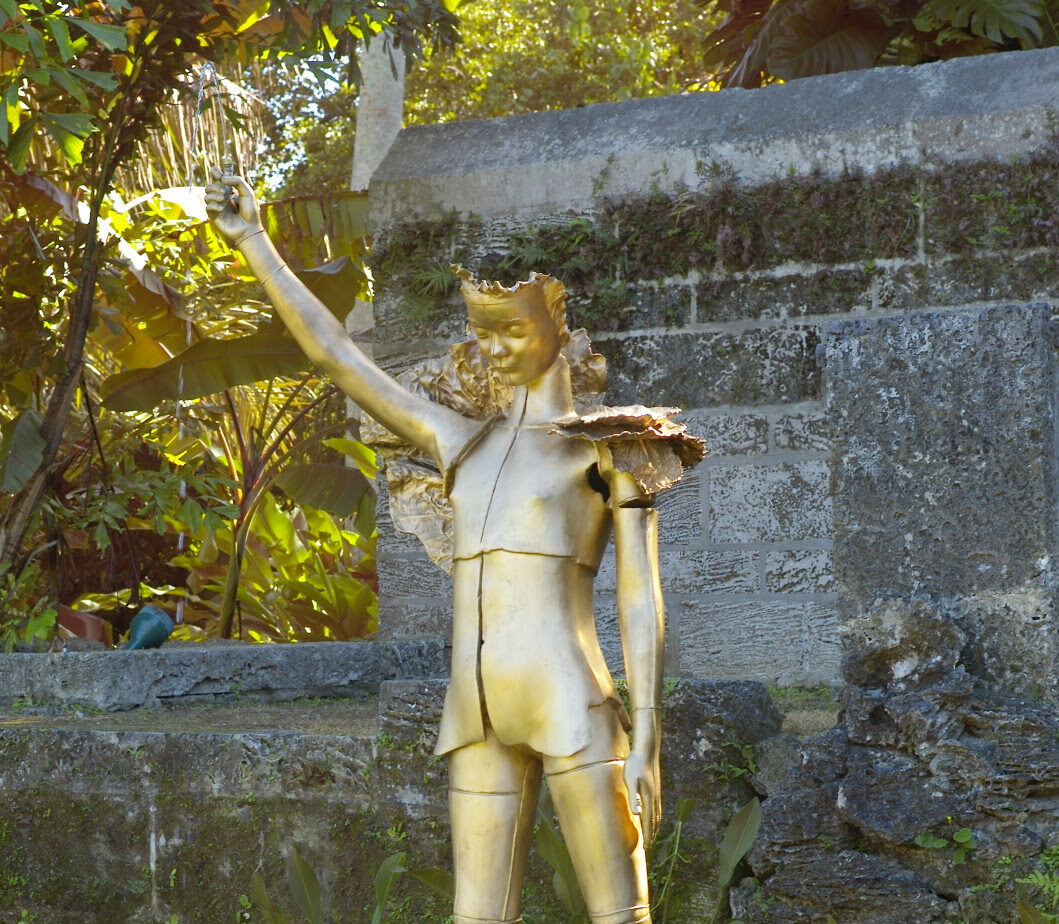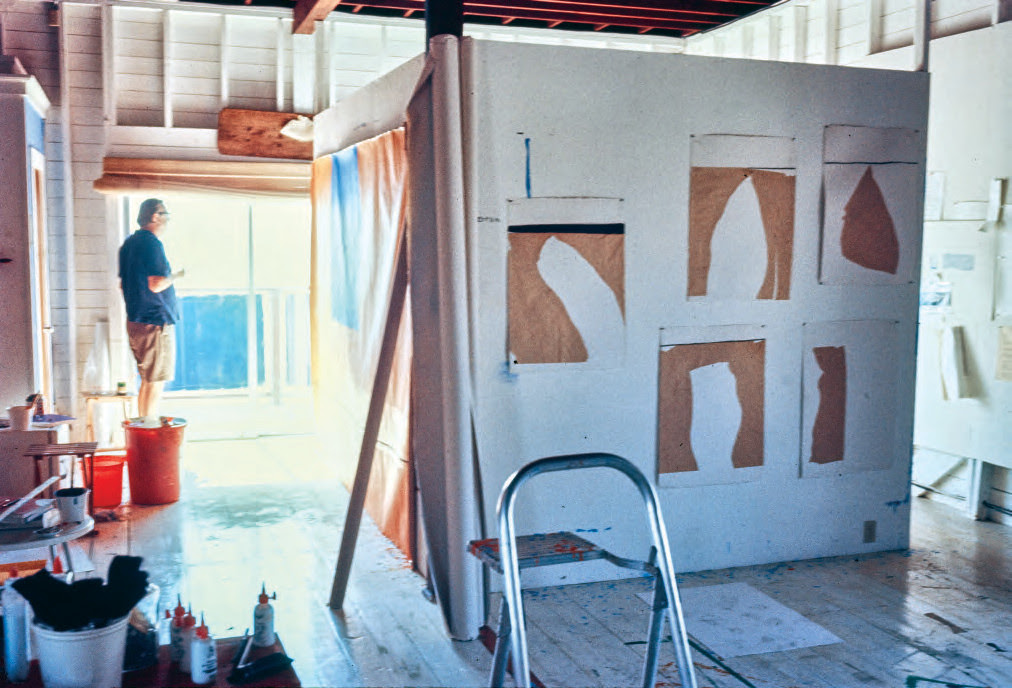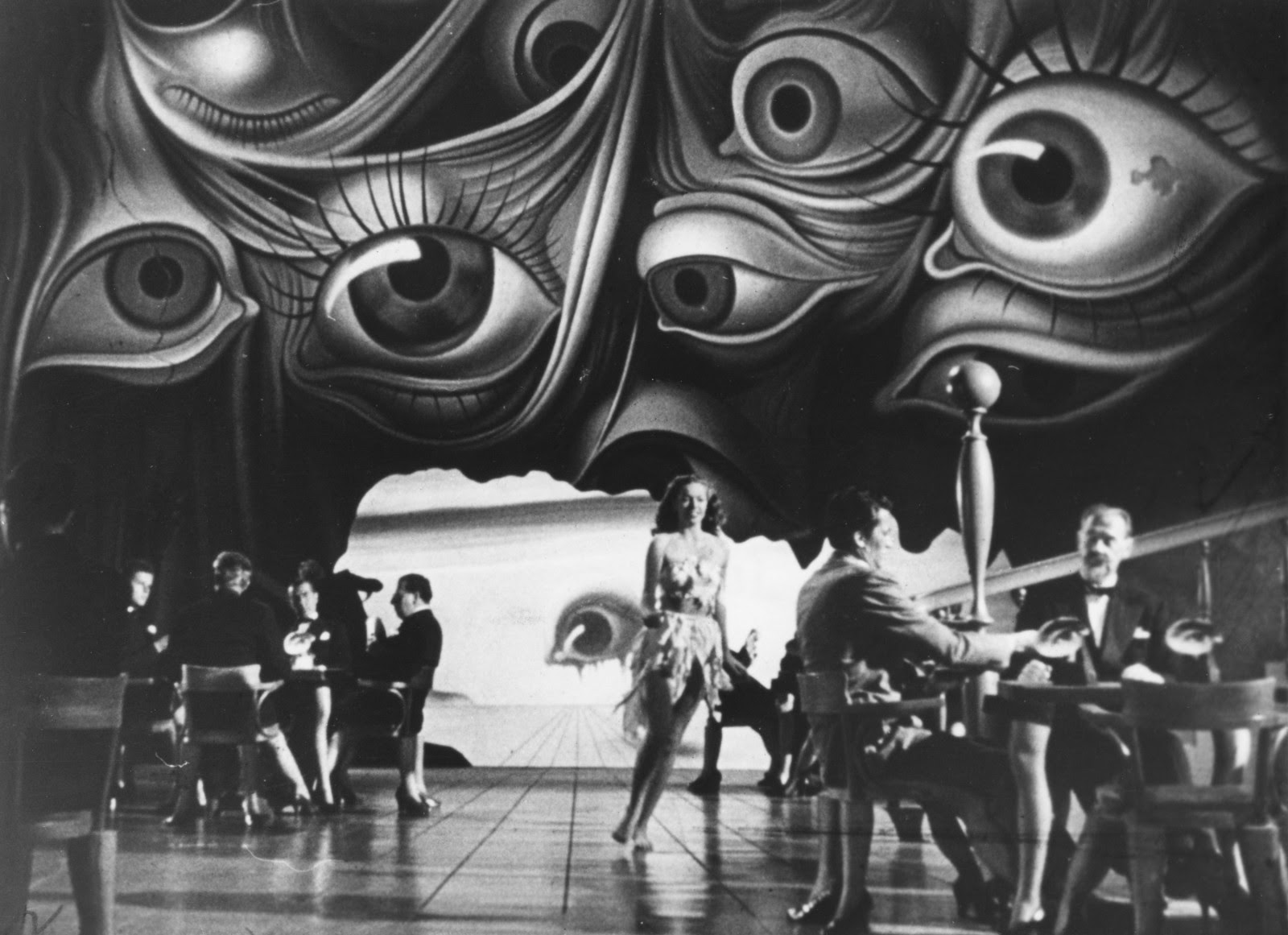On occasional Saturday mornings, Kasmin shares essays and interviews from both archival and newly-printed publications that expand critically on the work and practice of gallery artists. The below essay on Ali Banisadr (b. 1976) is written by John Yau and appears in the artist's major monograph published by Rizzoli Electa in 2021. Banisadr's first solo exhibition at Kasmin, These Specks of Dust, was on view from May 6–June 26, 2021. Explore the show in our online viewing room.
[Ali] Banisadr arrives at a tempestuous, disturbed world that departs decisively from the timeless perfection and stillness of his predecessors; he is not trying to duplicate that fastidious minuteness we associate with Bosch or with Persian and Mughal miniatures, in which the seamless merging of the recognizable and the fantastical was the goal. Rather, something feverish and unsettled seems to be gripping the paintings. Though a deft use of color and masterful brushstrokes, Banisadr conjures a world populated by figures that slip in and out of focus, hovering between form and dissolution, delineation and ambiguity.
Some figures we see clearly, others we seem to glimpse in passing. We are never sure who or what they are. We do not know whether they are sinister or not. It is a world that is simultaneously inviting and unsettling, visceral and remote. It is one that, in painting after painting, holds my attention even as it perplexes me. It is this reflective space, opened up by his work, which I want to consider. It entails a process of slow looking that is entirely contrary to the way we now live in time and multi-tasking has become a necessary form of behavior. What introspective space do Banisadr’s visceral forms and redolent colors, which we cannot quite name, lead us into?
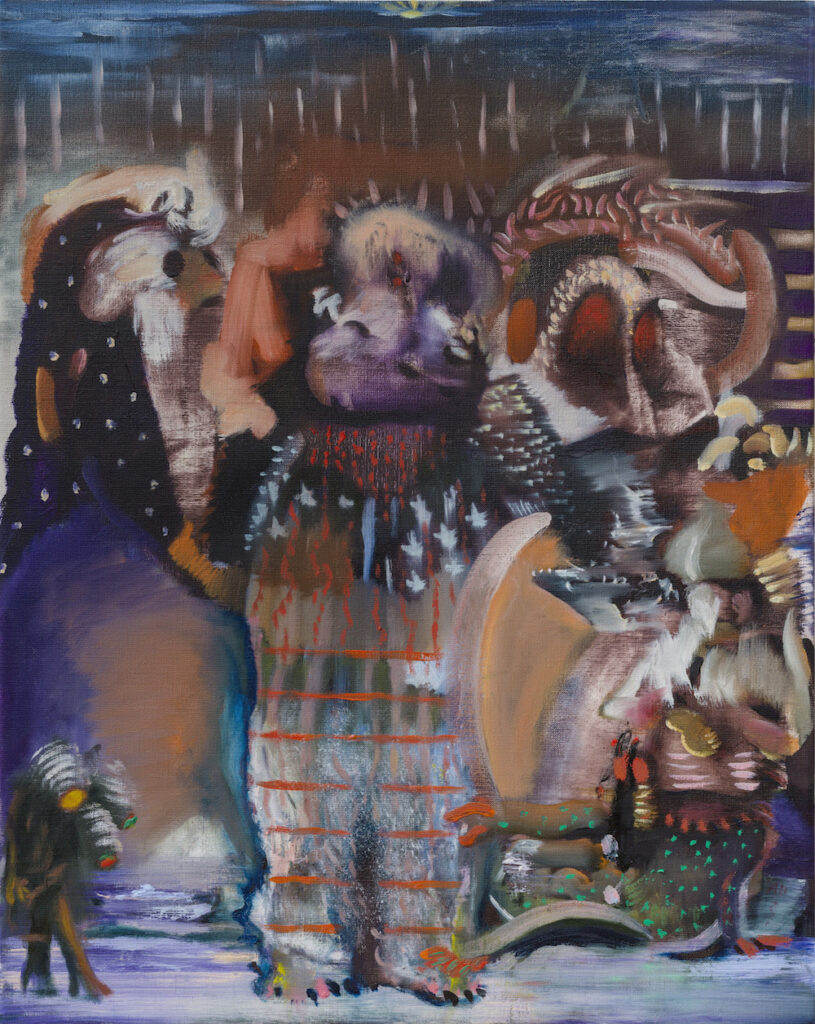
No longer restricted by seasons and harvest cycles, we eat food that was frown or slaughtered on another continent without pondering how it might have been brought to the markets where we shop. For reasons beyond our control, we might live far from where we were born and speak a language different than the one we learned as children. While Banisadr makes no overt reference to the rifts, displacements, and relocations that have taken place during the past fifty years, particularly in terms of production and population, a feeling of haunted transformation nevertheless animates his work.
It entails a process of slow looking that is entirely contrary to the way we now live in time and multi-tasking has become a necessary form of behavior. What introspective space do Banisadr’s visceral forms and redolent colors, which we cannot quite name, lead us into?
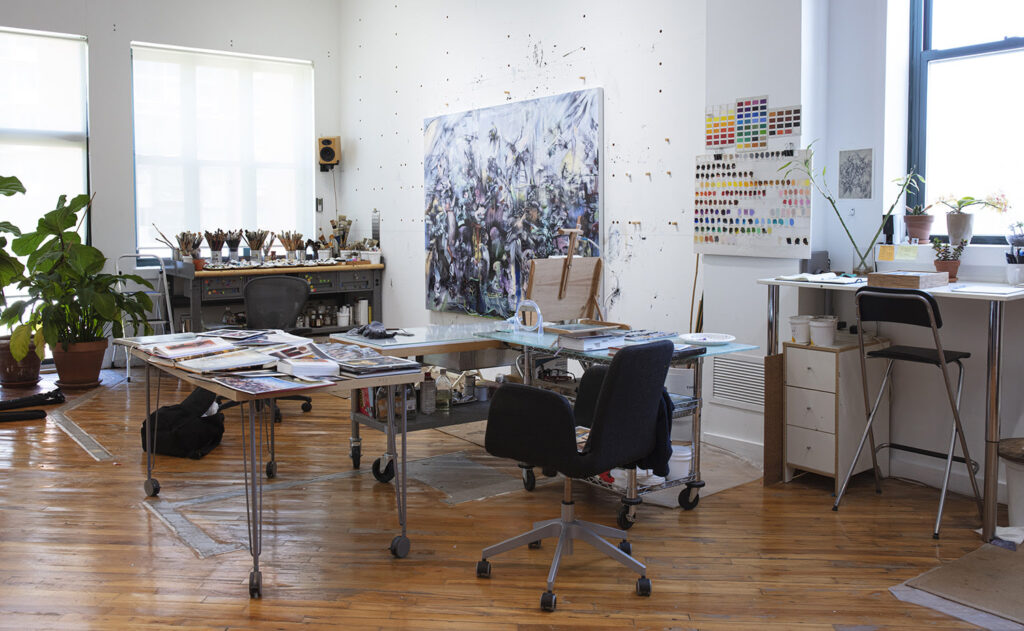
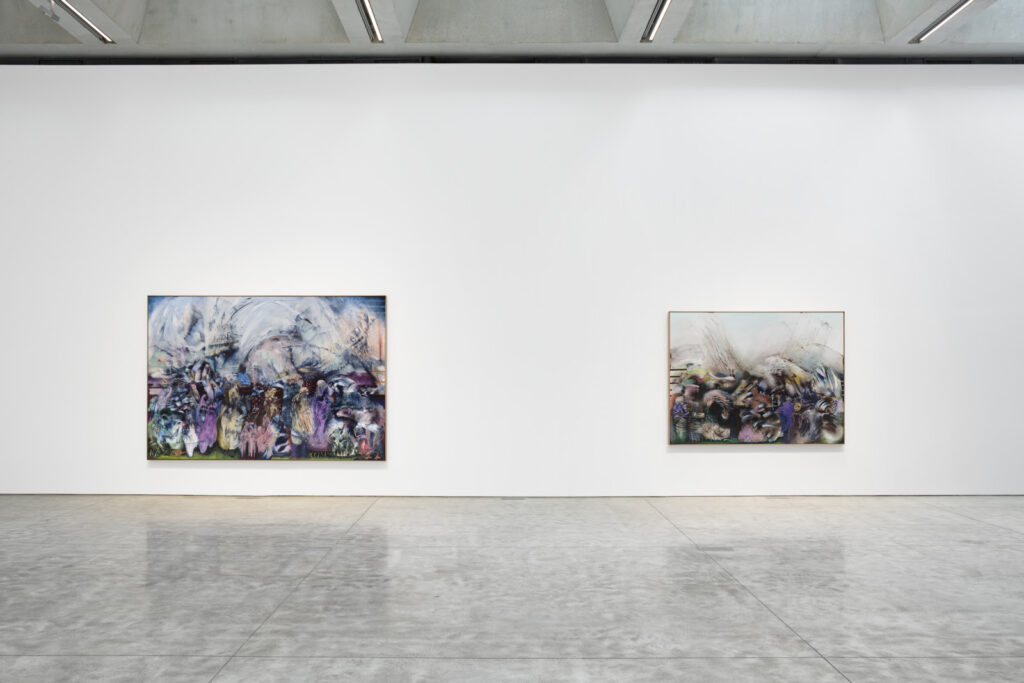
The visual disturbances we encounter in Banisadr’s paintings can be traced in part to the artist’s biography. He was born in Tehran, Iran, in 1976, and in 1988 his family moved to San Diego, California. The artist has stated in interviews that he was shaped by his memories of two singular events in Iranian history: the Islamic Revolution (1979), which resulted in the overthrow of the Shah of Iran and the Pahlavi dynasty, and the Iran-Iraq War (1980–88). Prior to his family’s immigration to the United States, Banisadr’s childhood was marked by revolution and war, the daily existence of unceasing conflict. To experience widespread turmoil as well as continual relapses into pandemonium in one’s daily life, all before one learns to speak, could take on a far greater psychological significance than specific, nameable aspects of the chaos one lives though.
Banisadr has incorporated these formative perceptions of reality into his work without turning them into anecdotes or verifiable events. It is what infuses his work with a dream-like eeriness. His goal is neither the perfection of appearances, which is focused on describing an exterior world, nor the pictorial re-creation of a personal experience. He is not a narrative painter or a visual storyteller in that regard. His interest in narrative, rather, seems to be about the collision between the inability to tell what exactly happened and an overwhelming desire to do exactly that. For him, bodily memories and the stuff of dreams—the interior, inchoate world of visceral sensations—are among the most forceful contributors to what happens on the canvas.
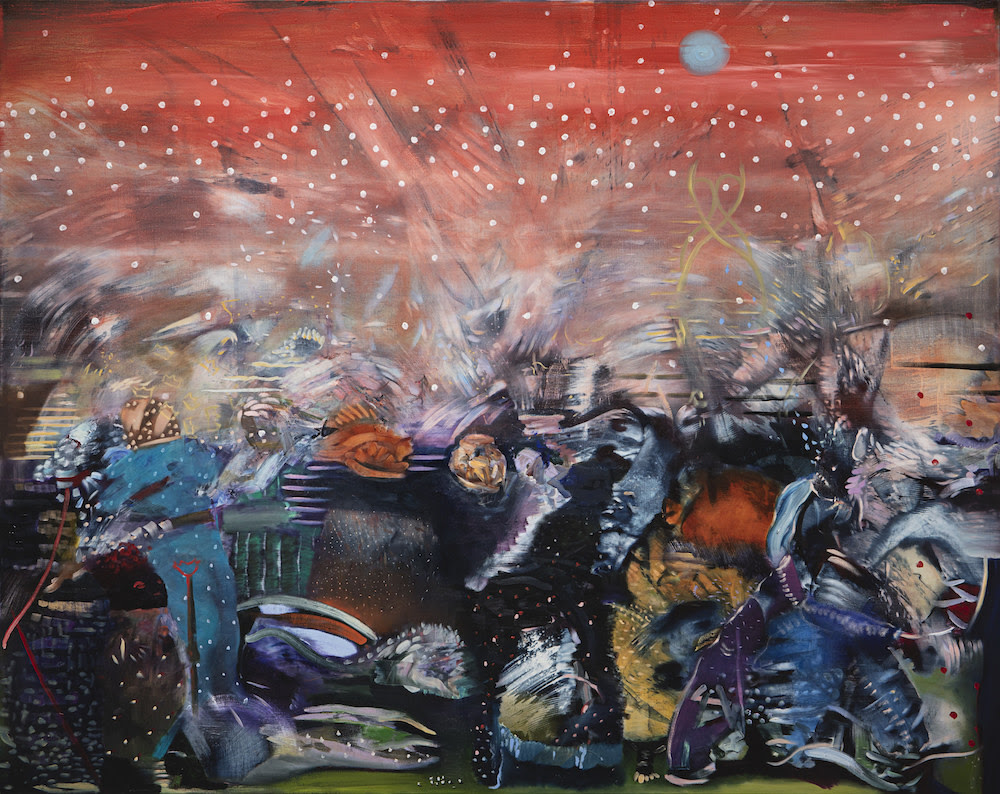
At the same time, conflict is not the only thing that preoccupies Banisadr. Like Bosch and his contemporary Matthias Grünewald, whose greatest work, the Isenheim Altarpiece (1516), was made for a hospital dedicated to the care of plague victims, Banisadr has long understood the existence of an invisible world of contagions—something we have become painfully aware of during the lockdowns and quarantines of the Covid-19 pandemic. Living in a state of daily precarity marked by increasing distrust and constant worry, of the need to be vigilant about the precautions one must take in order to undertake essential chores, our sense of vulnerability has been heightened to an almost excruciating pitch.
In his recently completed painting Red (2020), Banisadr makes a series of white dots in the red sky, suggesting the presence of infected respiratory droplets and aerosol in the air. In Only Breath (2020), he overlays a purple figure whose face is hidden with different arrangements of red, blue, white, and black dots. While the reference to the pandemic and contagion is very likely, Banisadr’s gestural marks can also be read as purely formal.
“His goal is neither the perfection of appearances, which is focused on describing an exterior world, nor the pictorial re-creation of a personal experience. He is not a narrative painter or a visual storyteller in that regard. His interest in narrative, rather, seems to be about the collision between the inability to tell what exactly happened and an overwhelming desire to do exactly that.”
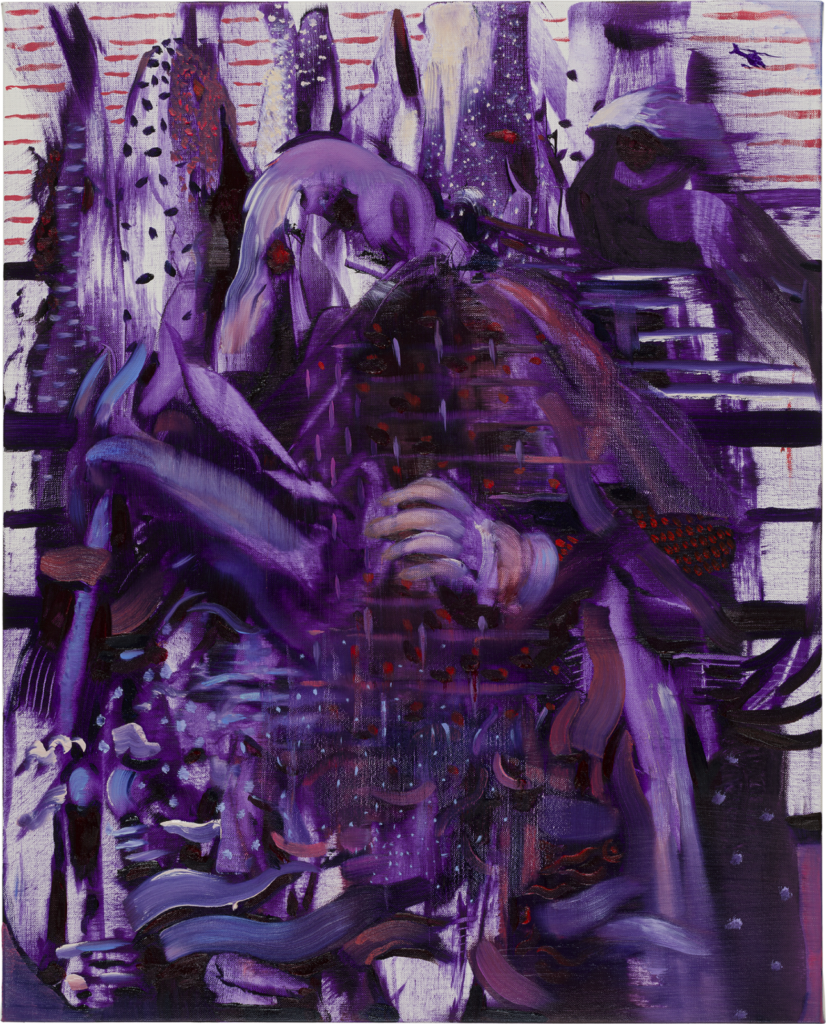
Banisadr started hitting his stride around 2007, in paintings such as Black, Exxon, and Infidels. In these early works, the artist embraced two possibilities offered by previous generations. The first possibility was from the Abstract Expressionists, who recognized the capacious associations stirred up by the painting’s expansive materiality: its fluid brushstrokes, dissolved pigments, and abstract marks. Banisadr’s absorption of their explorations is the source of the metaphysical wind moving through his paintings. It is why I took note of the books on the artist’s table about Krasner and Gorky — artists who transformed painting into a cathartic agent for confronting despair and grief. In addition to the Abstract Expressionists, Banisadr has embraced a wide range of inspirations, including non-western art such as Japanese woodcuts and Persian and Mughal Miniatures, their use of patterns to activate a surface. His approach is non-hierarchical and synthetic.
The second possibility he got was the use of color by the Minimalists, especially by monochromatic painters such as Brice Marden, whose paintings convey a distinct but unnamable mood. In his studio practice, Banisadr told me that the initial color he uses to cover the surface–the umber in his unfinished painting–helps establishes the atmosphere of the painting.
In three early paintings, all done in 2007, Banisadr explores very different possibilities with a great deal of assurance. In Infidels (2007), he gives the pale greens in the landscape and the pale blues defining the sky an given an emotional twist by combining abstract red passages and flesh-colored forms just above the bottom edge, near the middle of the painting. While the light infused blue and pale green imply spring and renewal, the proximity of red paint and flesh-colored forms invite a very different reading.
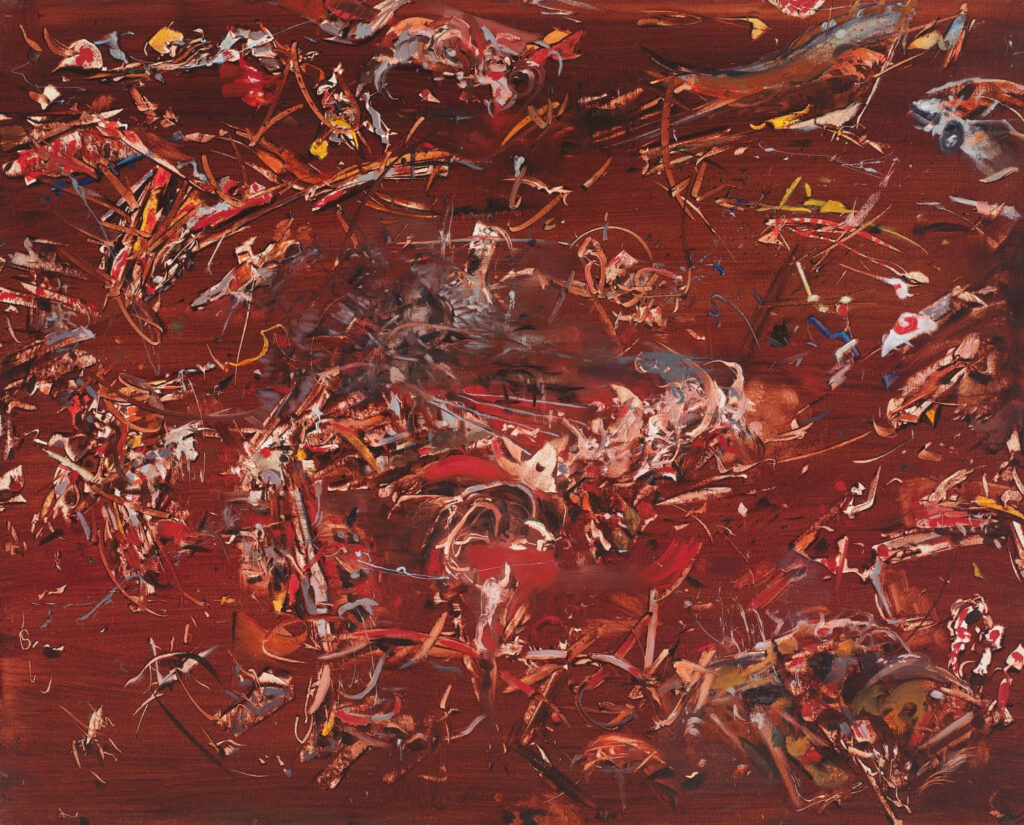
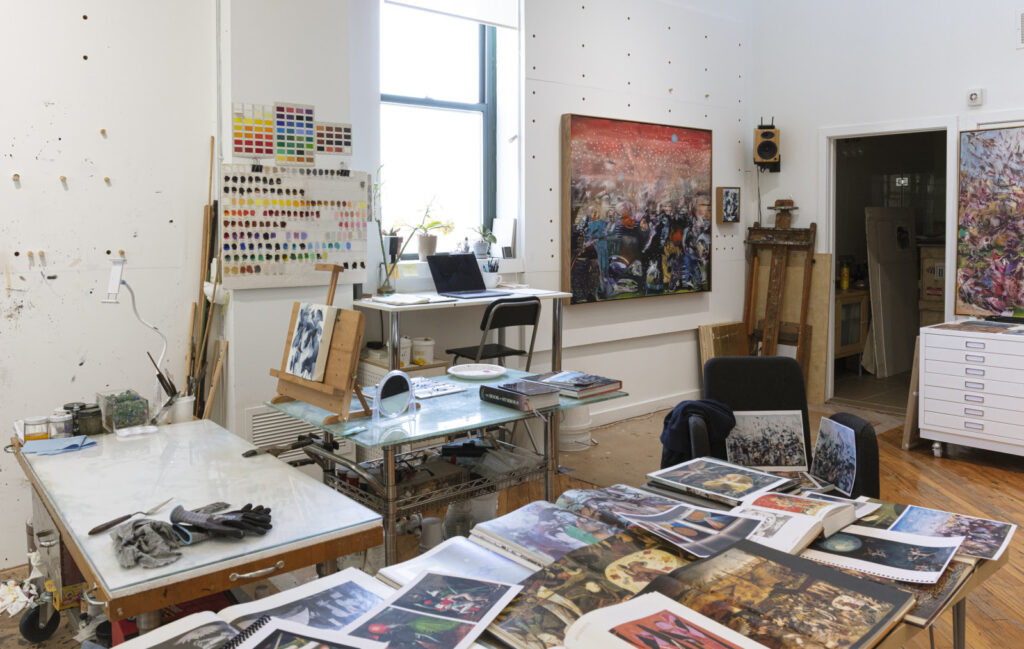
In Exxon and Black, which were done the same year, Banisadr lays down a monochromatic ground, which he then paints on top of with gestural marks of related hues. In Exxon, the clusters of gestural marks dispersed across a ground the color of rust or dried blood summons an unnamable disaster in our mind. In Black, the ground is dark black at top but lightens to gray at the bottom. About the one-sixth of the way up from the painting’s bottom edge, Bansiadr defines a curving band separating the bottom part from the larger upper part of the painting. From each end of the curving band, a diagonal band rises, tilted inward, until it reaches the painting’s top edge. In this upper area, Banisadr lays down loose, flesh colored brushstrokes that evoke falling figures.
Looking at Banisadr’s work, I kept getting the feeling that I was in the presence of an unnamed and even unnamable visual storm. This is true whether he is working small, as in Only Breath, or large, as in Red (oil on linen, 48 by 60 inches, 2020), which is divided equally between its upper and lower halves. The weightier, darker bottom half is occupied by spectral figures, while the upper area functions as the backdrop: in this case, a reddish, atmospheric glow. The different horizontal lines and bands spanning the middle of the painting, behind the figural presences and below the sky, push the forms closer to the painting’s surface. As a result, the compressed spatiality of its compositional format can be understood as a stage set or as a landscape that never quite reaches the horizon, implying a world somewhere beyond this one.
